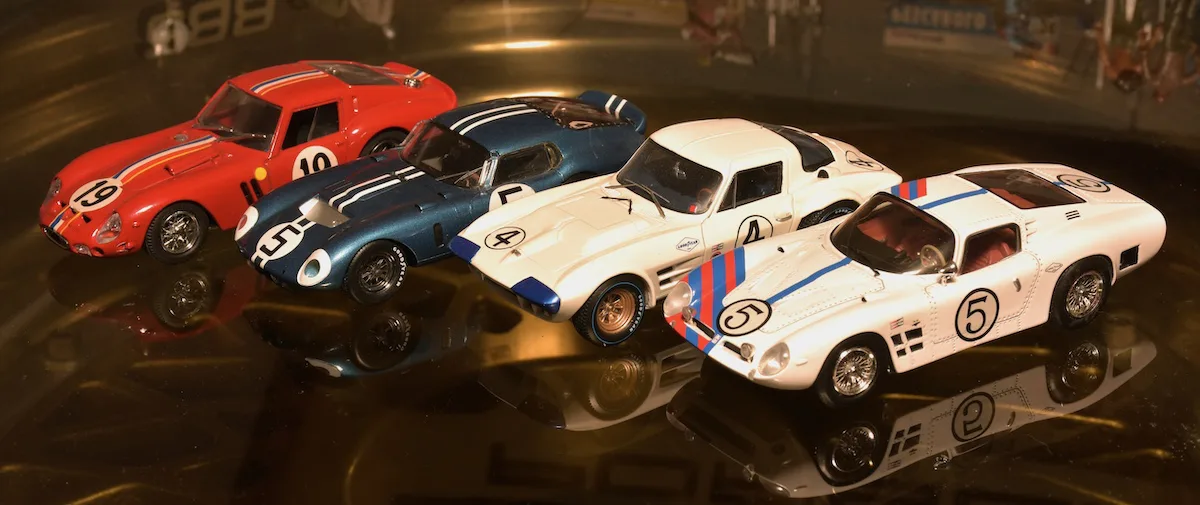Published October 7, 2025 | Last update November 10, 2025 | 28 models online
Here you will find a quite random selection of classic GT and sports cars from the early 1950’s until the end of the 1960’s. Some have already been published in other collections, but who cares if they are nice to see …
1950’s
1952 Le Mans 24h, Mercedes-Benz 300 SL. After the world war, Mercedes took to the race tracks to re-establish its name as a major manufacturer. The 300 SL was a masterpiece with its space frame body and famous gull-wing doors. Only 10 were built and in 1952 SL’s finished 2nd in the Mille Miglia, won at Le Mans, 1000 km Nürburgring, and Carrera Panamericana. This #22 car failed to finish Le Mans, but the same car won the Carrera Panamericana later that year.
#22 Karl Kling (D) / Hans Klenk (D) – DNF
Mercedes-Benz 300 SL W194 Coupe – 3.0 liter Mercedes-Benz M194 straight-6, approx. 178 hp. Continental tires. Weight 1.060 kg. Steel space frame with aluminium body, chassisnr. W194 #0009/52
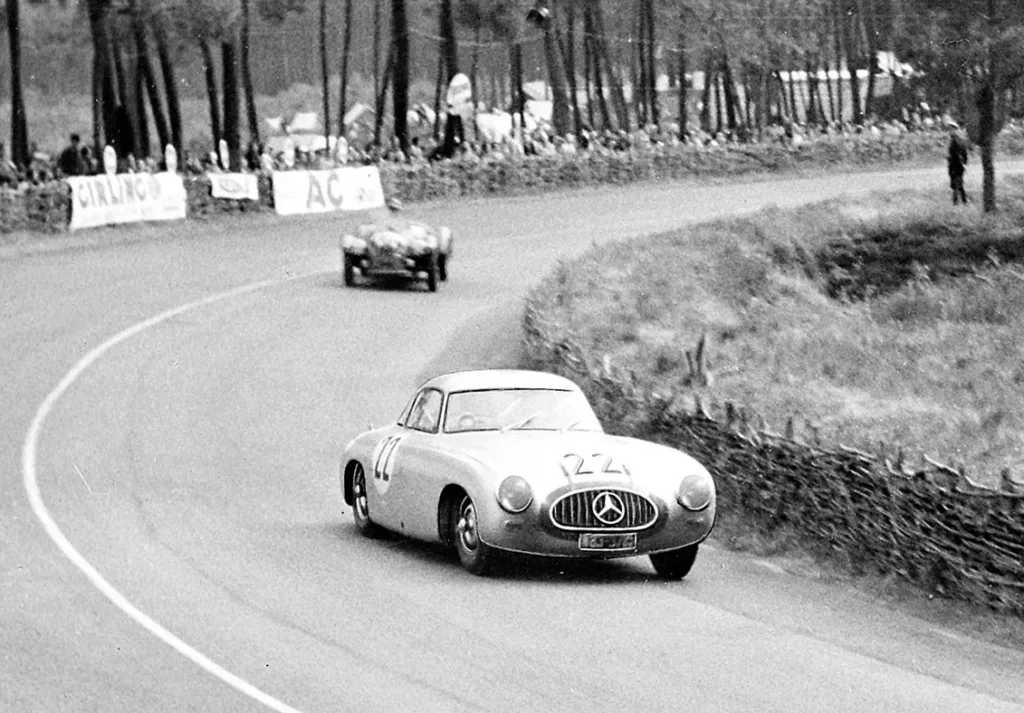
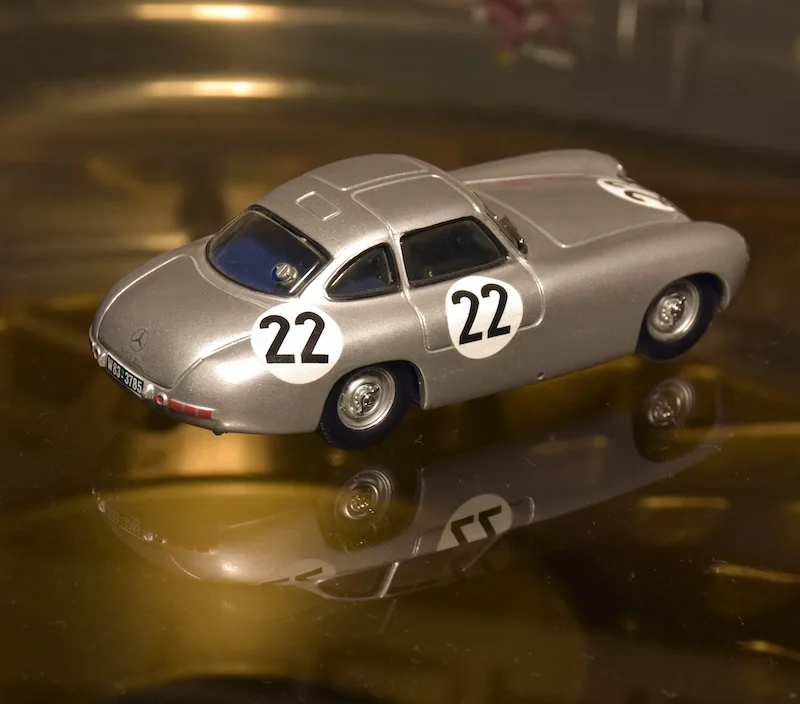
- Max Models 3312 (diecast)
- Overall rating: 3 STARS | Quality details: 3 STARS | Estimated value: 3 STARS
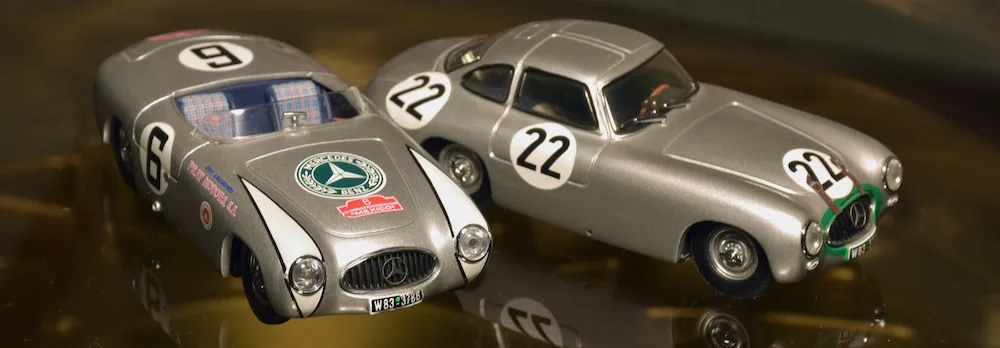
1952 Carrera Panamericana, Mercedes-Benz 300 SL. The Carrera Panamericana was a border-to-border racing event on open roads in Mexico similar to the Mille Miglia in Italy. The first race in 1950 was rather amateuristic and chaotic. In 1951 Ferrari’s defeated the many American stock-cars. In 1952, Mercedes sent a professional team to Mexico with some well prepared 300 SL. The gull wing Silver Arrows finished first (Karl Kling) and second (Hermann Lang). It could have been a 1-2-3, but this car – a roadster version – was disqualified because a mechanic made an illegal repair.
#6 John Fitch (USA) / Eugen Geiger (D) – DSQ
Mercedes-Benz 300 SL W194 Roadster – 3.0 liter Mercedes-Benz M194 straight-6, approx. 178 hp. Continental tires. Weight 1.000 kg. Steel space frame with aluminium body, chassisnr. W194 #0009/52
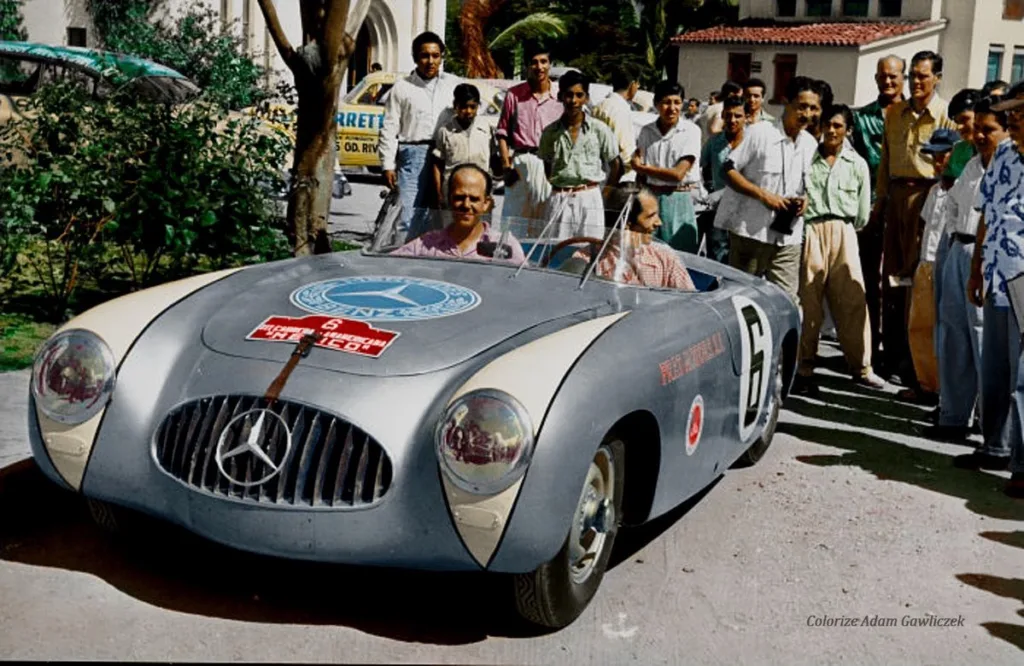
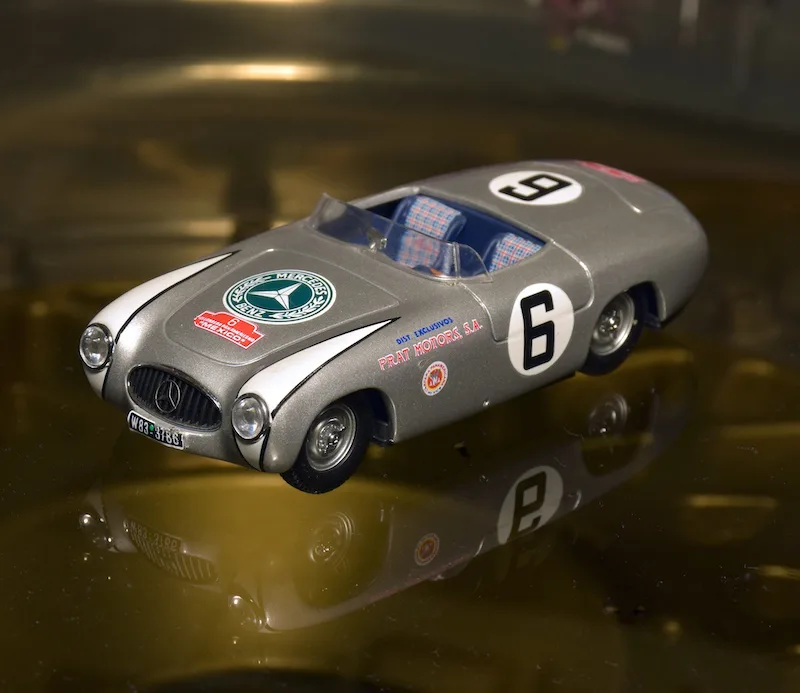
- Max Models 3350 (diecast)
- Overall rating: 3 STARS | Quality details: 3 STARS | Estimated value: 3 STARS
1953 Targa Florio, Maserati A6GCS/53. Juan Manuel Fangio was one of the favorites, starting in his #20 Maserati A6GCS, but he had to retire. He then got into the #66 car, original driven by Sergio Mantovani and together they finished 3rd behind another Maserati driven by Emilio Giletti and the Lancia of Umberto Maglioli.
#66 Juan Manuel Fangio (RA) / Sergio Mantovani (I) – 3rd
Officine Alfieri Maserati A6GCS/53 – 2.0 liter Maserati straight-6, approx. 170 hp. Pirelli tires. Weight 780 kg. Steel space frame, chassisnr. #2042
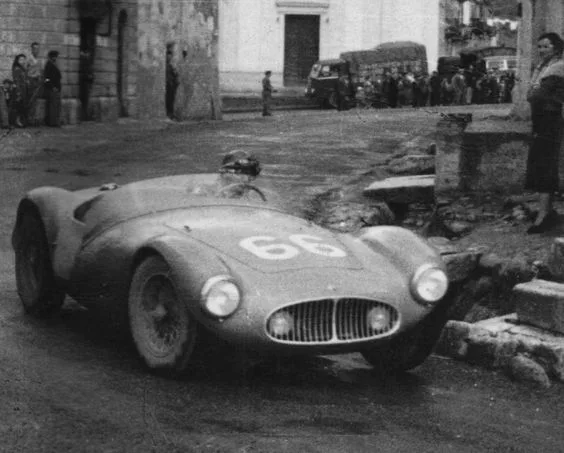
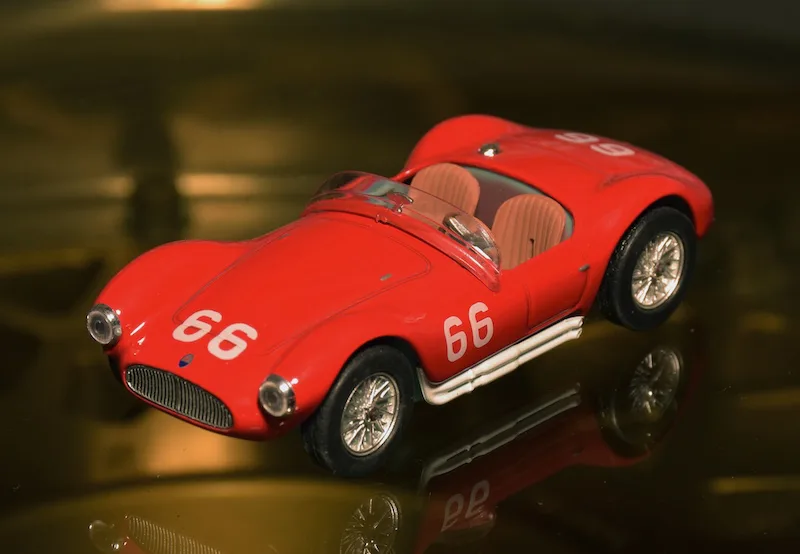
- LEO Models #unknown (diecast)
- Overall rating: 2 STARS | Quality details: 1 STAR | Estimated value: 1 STAR
1955 Mille Miglia, Mercedes-Benz 300 SLR. Stirling Moss and Denis Jenkinson made pace notes like modern rally drivers do. With this strategy they defeated the local Italian favorites with their powerful Ferrari’s. Moss won the Mille Miglia (1000 miles) in a record time of 10 hours and 7 minutes. Fun fact: 722 is their starting time: 7:22 AM.
#722 Stirling Moss (GB) / Denis Jenkinson (GB) – 1st
Mercedes-Benz 300 SLR – 3.0 liter Mercedes-Benz M196S straight-8, approx. 310 hp. Continental tires. Weight 920 kg. Steel space frame, chassisnr. W196S #0004/55
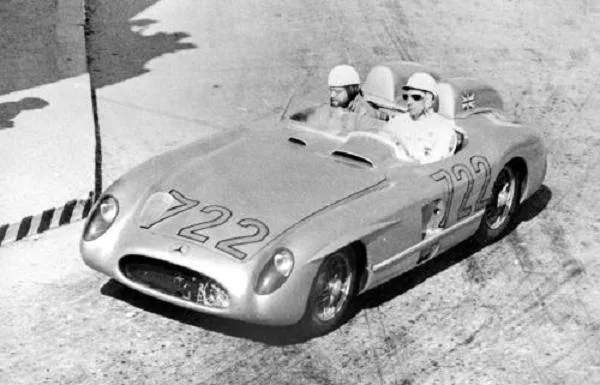
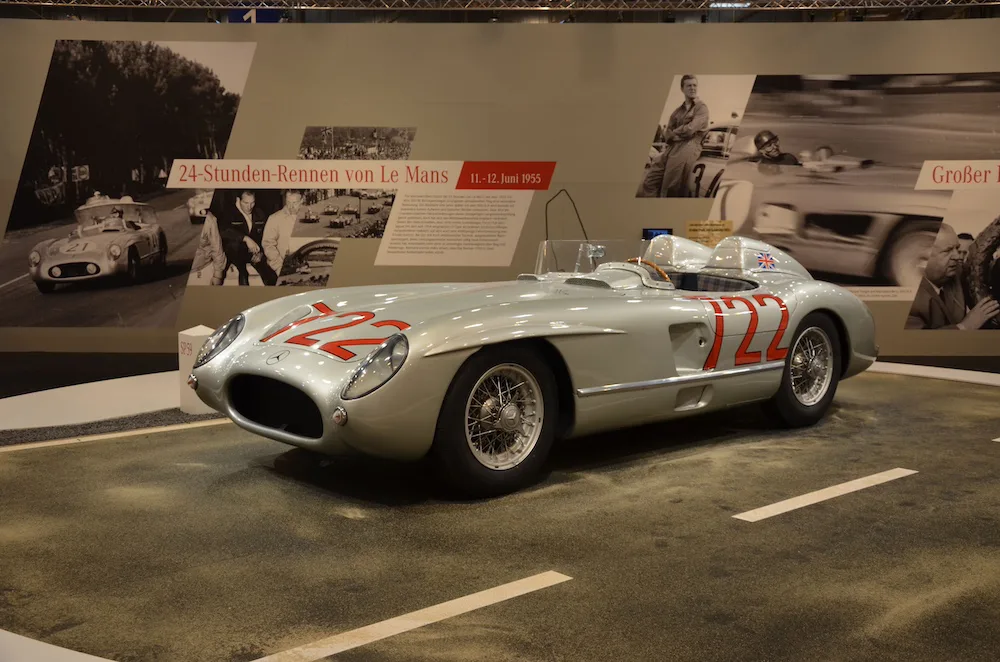
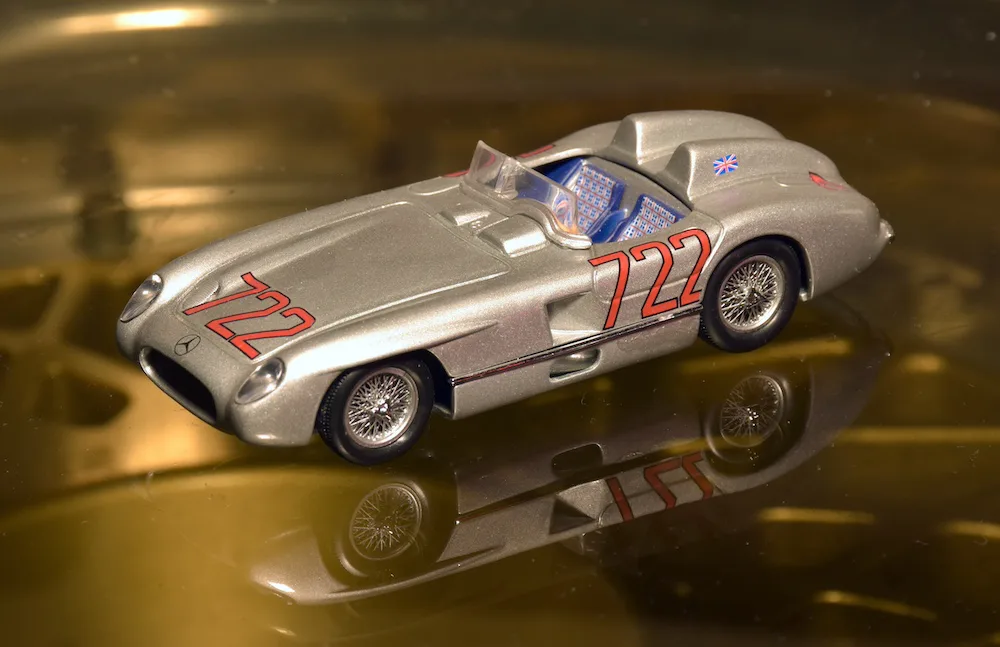
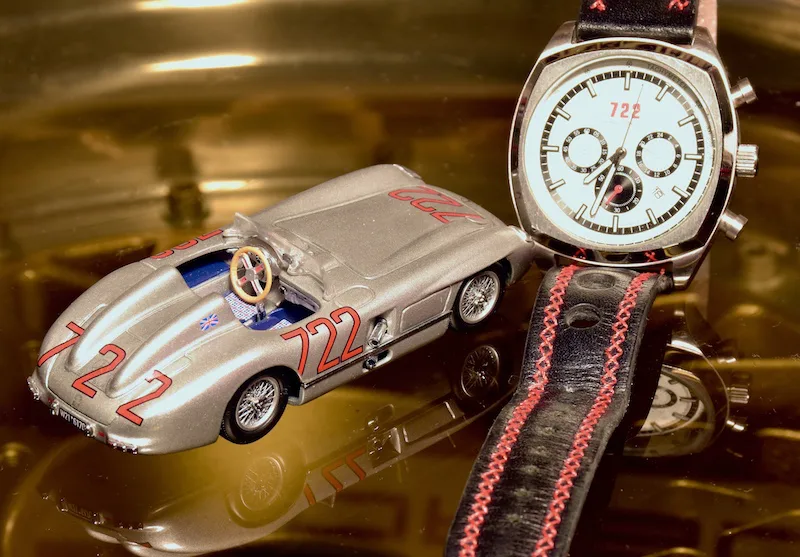
- MINICHAMPS Mercedes-Benz Classic Collection B8 604 0252 (diecast)
- Overall rating: 3 STARS | Quality details: 3 STARS | Estimated value: 3 STARS
1955 Le Mans 24h, Mercedes-Benz 300 SLR. The biggest disaster ever in motorsport was the crash at Le Mans in 1955. Pierre Levegh in the Mercedes ran into the back of an Austin Healey that skipped to the left when he had to avoid the braking Jaguar of Mike Hawthorn. Levegh’s car took off and skipped over a protective wall at 200 km/h and landed in a spectator area. The Mercedes disintegrated and large pieces of debris, including the engine block and suspension were sent flying into the grandstand. The rear of Levegh’s car exploded into flames. 88 people were killed including Levegh and another 120 wounded…
#55 Pierre Levegh (F) / John Fitch (USA) DNS – DNF
Mercedes-Benz 300 SLR – 3.0 liter Mercedes-Benz M196S straight-8 approx. 310 hp. Continental tires. Weight 920 kg. Steel space frame, chassisnr. W196S #0006/55
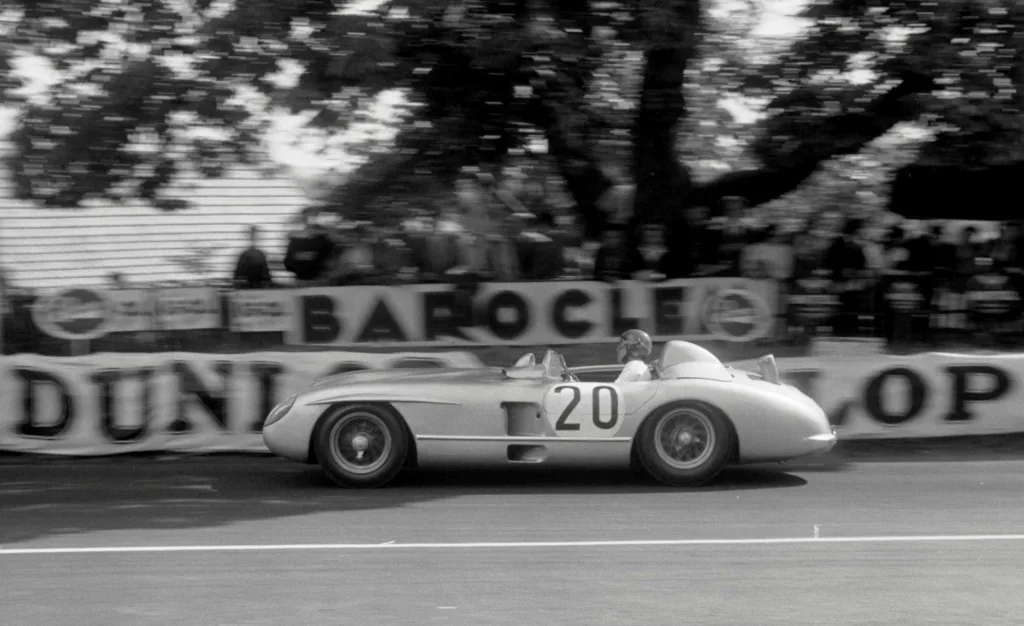
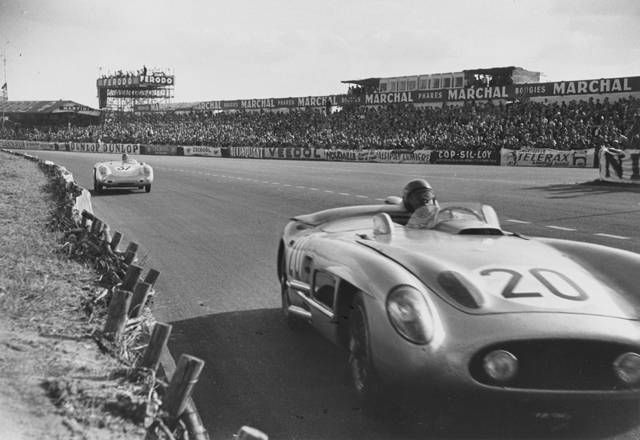
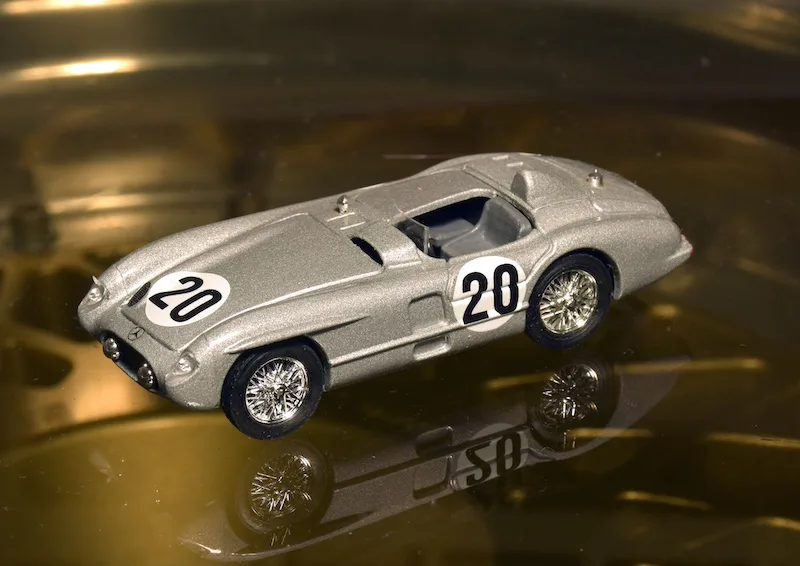
- BRUMM R188 (diecast)
- Overall rating: 2 STARS | Quality details: 2 STARS | Estimated value: 2 STARS
1955 Le Mans 24h, Jaguar D-type. Incredible that after the terrible accident the race just continued. With Mercedes out of the running, the race was Jaguar’s. The factory car won and the Ecurie Francorchamps car finished 3rd, an Aston Martin DB3S in between. The American Cunningham entry in the classic American livery failed to finish due to engine problems.
#9 Phil Walters (USA) / Bill Spear (USA) – DNF
Cunningham Jaguar D-Type – 3.4 liter Jaguar XK straight-6, approx. 250 hp. Dunlop tires. Weight 875 kg. Magnesium & Aluminium monocoque, chassisnr. #XKD 507
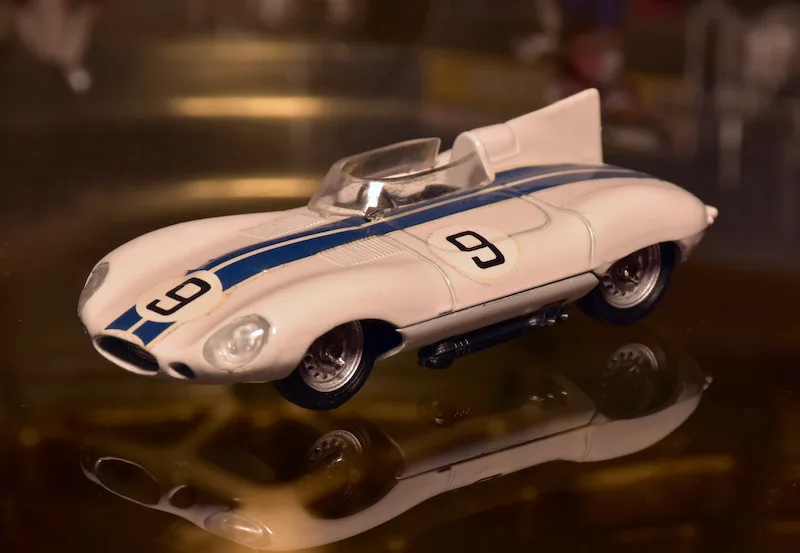
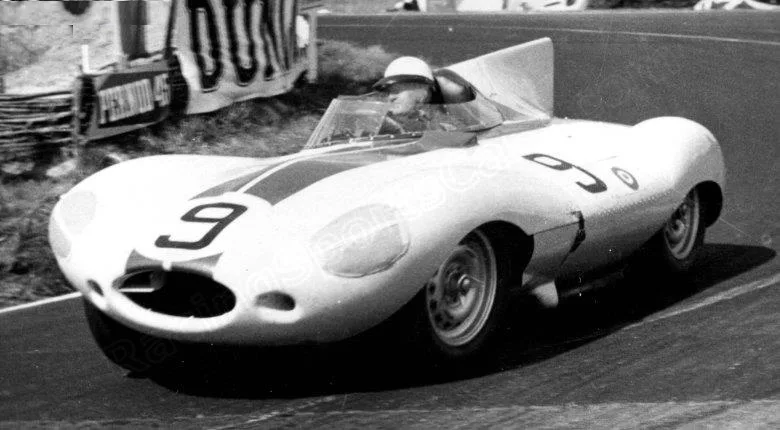
- BRUMM R130 (diecast)
- Overall rating: 2 STARS | Quality details: 2 STARS | Estimated value: 2 STARS
1956 Le Mans 24h, Porsche 550 RS Coupé. The 550 RS Coupé was a new developed car with a space frame that gave it much better handling than the platform chassis of the previous generation. The little twin-spark 4-cylinder was reliable and the small car won its class and finished 5th overall.
#25 Richard von Frankenberg (D) / Wolfgang von Trips (D) – 5th / 1st S1.5 liter
Porsche KG Porsche 550 RS Coupé – 1.5 liter 547/2 flat-4 twin-spark, approx. 130 hp. Continental tires. Weight 540 kg. Steel tubular frame + aluminium body, chassisnr. #0104
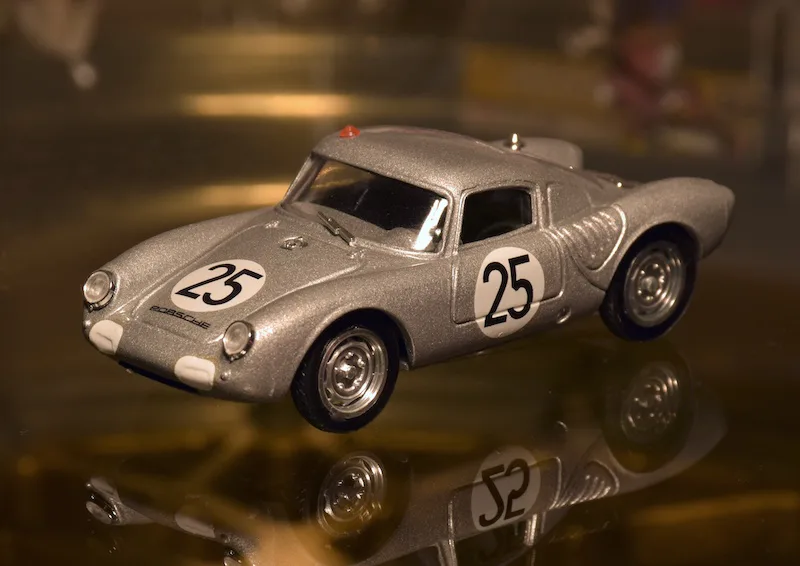
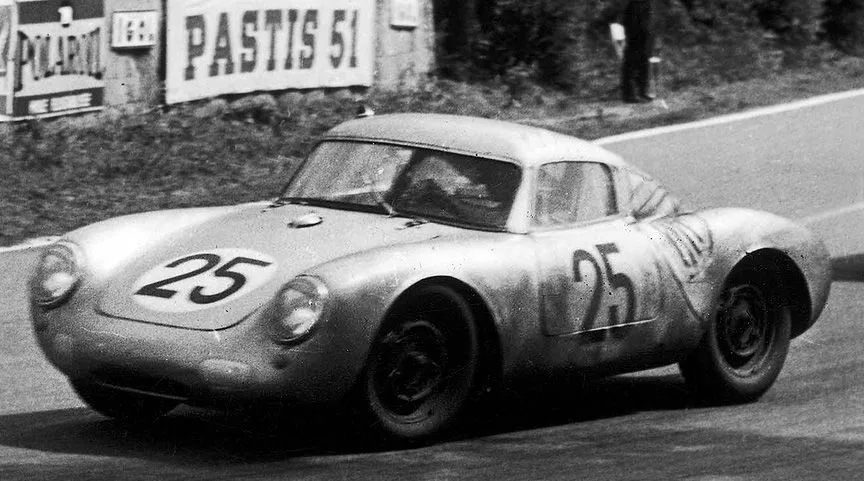
- BRUMM R192 (diecast)
- Overall rating: 2 STARS | Quality details: 2 STARS | Estimated value: 2 STARS
1959 Le Mans 24h, Aston Martin DBR1. Aston Martin has been switched from ownership many many times. In 1947 it was purchased by David Brown and in this period the British brand produced its now famous DB and DBR series. The DBR1 with 3-liter engine was a prototype with good aerodynamics, superb handling and braking en was very reliable. The British took double victory at Le Mans miles ahead in front of 4 Ferrari GT models, the Ferrari and Jaguar prototypes had all retired because of the high pace driven by the Aston Martins.
#5 Roy Salvadori (GB) / Carroll Shelby (USA) – 1st
David Brown Aston Martin DBR1/300 – 3.0 liter Aston Martin straight-6, approx. 270 hp. Avon tires. Weight 800 kg. steel tubular frame + aluminium body, chassisnr. #2
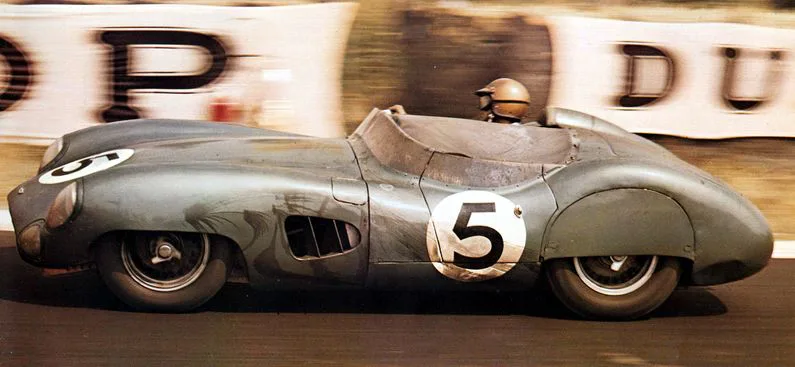
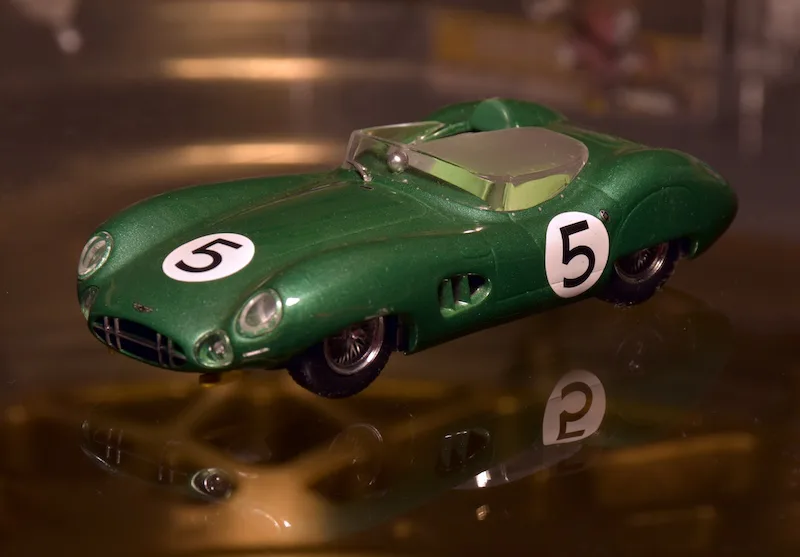
- IXO LMC 035 (diecast)
- Overall rating: 3 STARS | Quality details: 2 STARS | Estimated value: 2 STARS
1959 Le Mans 24h, Ferrari 250 GT Berlinetta. A bright yellow Ferrari looks like an Ecurie Francorchamps entry especially when André Pilette is one of the drivers. But this car is a North American Racing Team entered car and it finished 4th overall and 2nd in class behind a similar Ferrari that was entered by Equipe Nationale Belge which would become Ecurie Francorchamps … confusing….
#18 André Pilette (B) / George Arents (USA) – 4th / 2nd GT
N.A.R.T. Ferrari 250 GT Berlinetta – 3.0 liter Ferrari Tipo 168B V12, approx. 305 hp. Firestone tires. Weight 1100 kg. Aluminium space frame, chassisnr. #1461
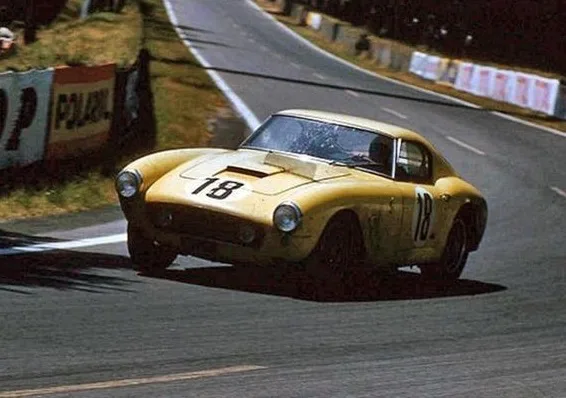
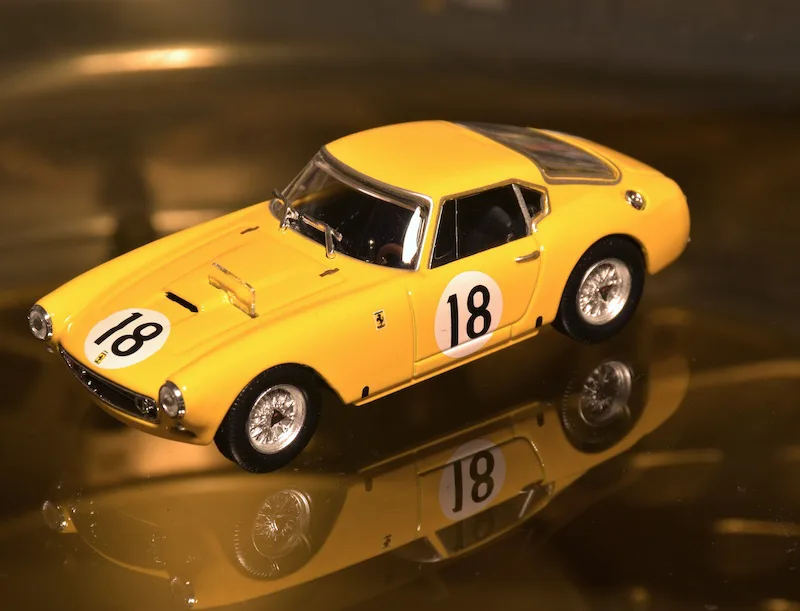
- ALTAYA #unknown (diecast)
- Overall rating: 3 STARS | Quality details: 3 STARS | Estimated value: 2 STARS
1960’s
1960 Le Mans 24h, Ferrari 250 TR. The Ferrari 250 TR (Testa Rosso) and later on the 330 TR ruled Le Mans between 1958 and 1962, winning four times. Olivier Gendebien won his second of four Le Mans 24 hours races, this year. He teamed up with fellow Belgian, the famous car journalist Paul Frère.
#11 Olivier Gendebien (B) / Paul Frère (B) – 1st
Scuderia Ferrari 250 Testa Rossa – 3.0 liter Ferrari Tipo 128 LM V12, approx. 300 hp. Dunlop tires. Weight 820 kg. Steel space frame, chassisnr. #0774
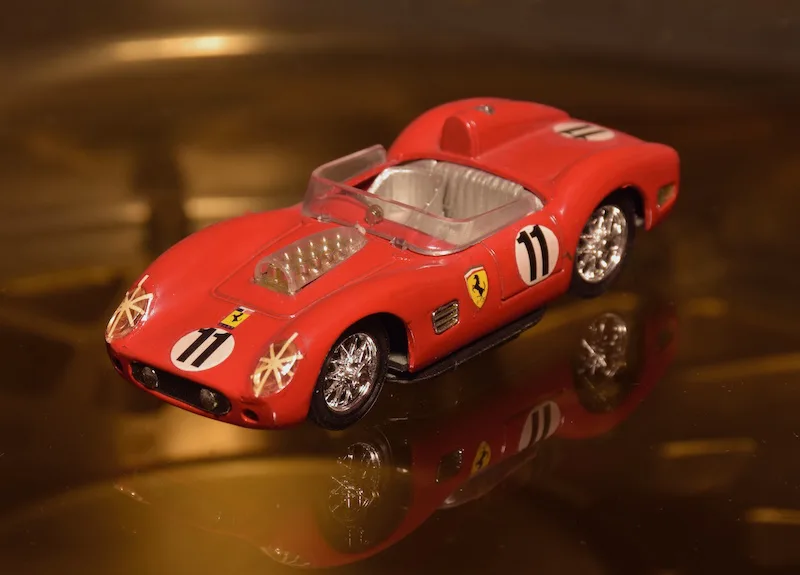
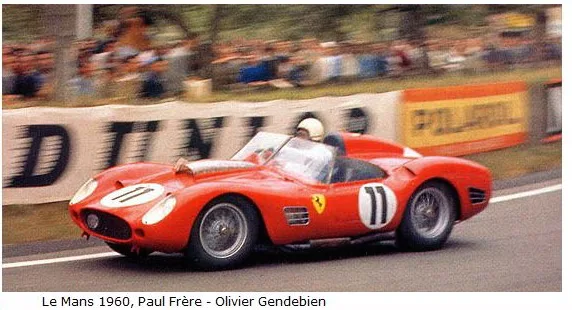
- BRUMM R093 (diecast)
- Overall rating: 3 STARS | Quality details: 2 STARS | Estimated value: 2 STARS
1962 Le Mans 24h, Ferrari 250 GTO. Noblet and Guichet were among the first to race a virtual standard Ferrari 250 GTO at Le Mans. They won the GT category and finished 2nd overall behind a Ferrari 330 prototype.
#19 Pierre Noblet (F) / Jean Guichet. (F) – 2nd / 1st GT
Noblet Ferrari 250 GTO – 3.0 liter Ferrari Tipo 168 Comp/62 – V12 60º, approx. 305 hp. Firestone tires. Weight 1050 kg. Aluminium space frame, chassisnr. #3705
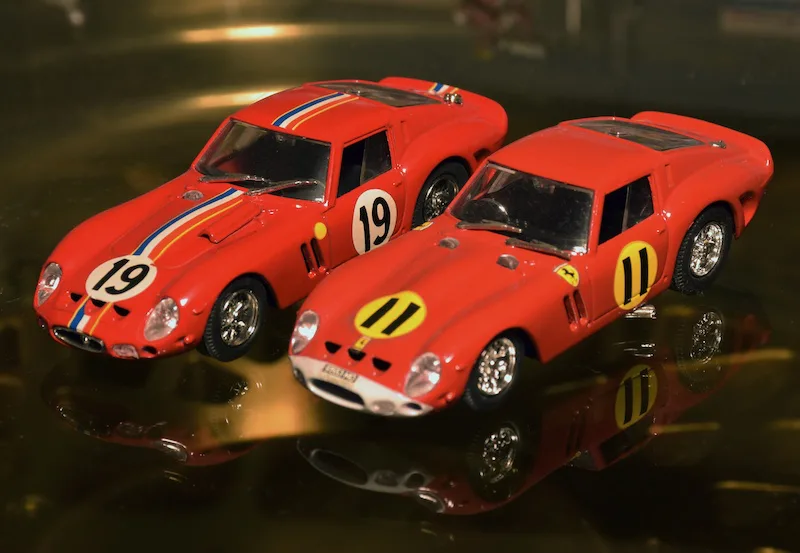
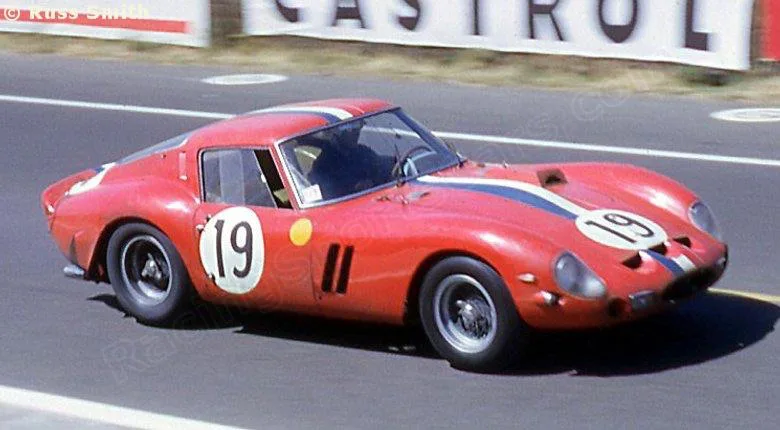
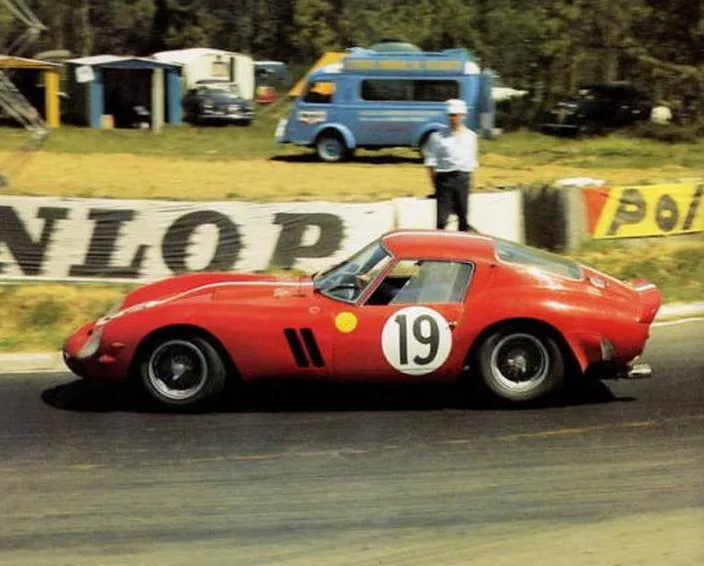
- BANG 48464 (diecast)
- Overall rating: 2 STARS | Quality details: 2 STARS | Estimated value: 2 STARS
1963 Tourist Trophy Goodwood, Ferrari 250 GTO. The world championship was a combination of the famous endurance races, hill climbs, even a rally and sprint races such as the TT at Goodwood. Graham Hill won the race in front of Mike Parkes, both in Ferrari 250 GTO. Jaguars finished 3rd and 4th, David Piper in another Ferrari 5th.
#11 Graham Hill (GB) – 1st
Ferrari 250 GTO – 3.0 liter Ferrari Tipo 168 Comp/62 – V12 60º, approx. 305 hp. Firestone tires. Weight 1050 kg. Aluminium space frame, chassisnr. #3705
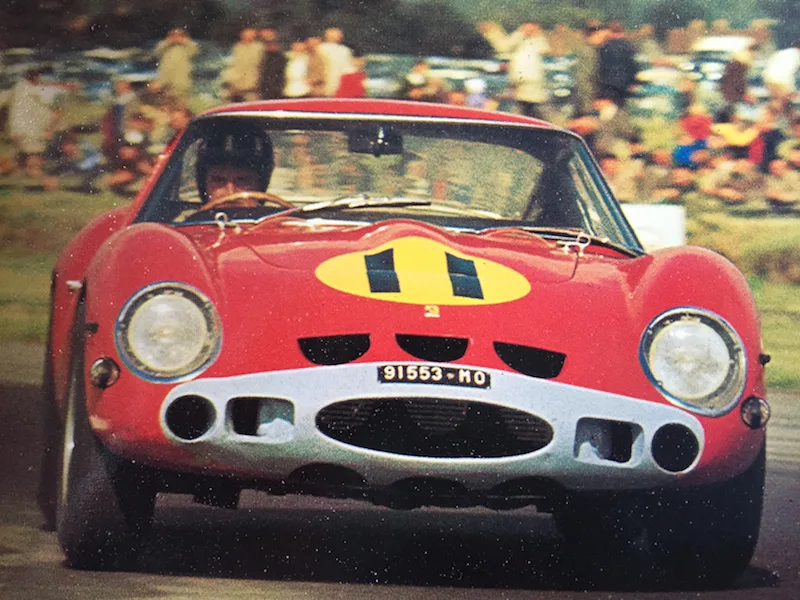

- MODEL BOX 8409 (diecast)
- Overall rating: 2 STARS | Quality details: 2 STARS | Estimated value: 2 STARS
1963 Sebring 12h, Shelby Cobra Roadster. Carroll Shelby took a British AC Ace chassis and replaced the original 6-cilinder engine a powerful Ford V8. The Cobra was a popular and succesful car in American clubraces thanks to its powerful engine and low weight, despite its bad aerodynamics. Famous drivers Dan Gurney and Phil Hill drove this Cobra in the Sebring 12-hours race but finished only 29th in a race dominated by the new Ferrari 250 prototypes.
#15 Dan Gurney (USA) / Phil Hill (USA) – 29th
Shelby AC Cobra Roadster – 4.7 liter Ford V8, approx. 360 hp. Goodyear tires. Weight 1.045 kg. steel space frame with aluminium body, chassisnr. CSX2228 (Shelby)
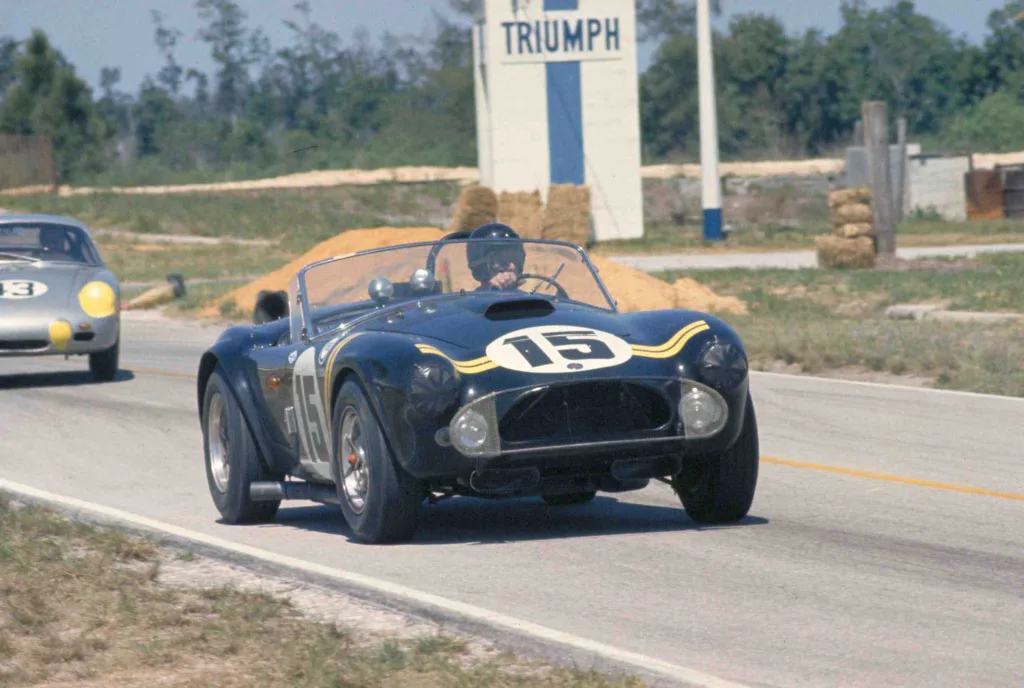
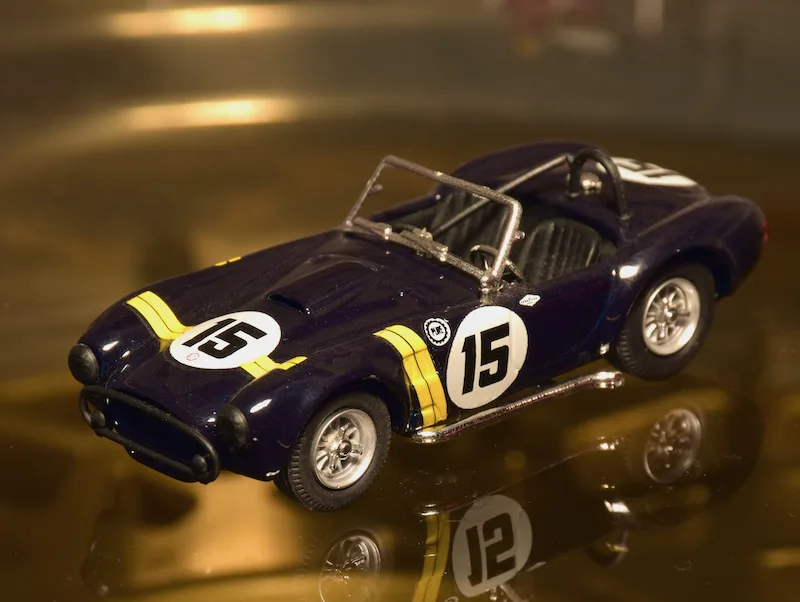
- MODELBOX B8414 (diecast)
- Overall rating: 2 STARS | Quality details: 2 STARS | Estimated value: 1 STAR (front window is missing)
1963 Le Mans 24h, Maserati Tipo 151/1. In 1962 Maserati built the Tipo 151 for the prototype class at Le Mans. The cars were fast but none finished the race. In 1963 only this Maserati, entered by the French distributor, participated. It was equipped with a stronger 4.9 liter engine but that was too much for the gearbox. The team retired after only 40 laps.
#2 André Simon (F) / Lloyd Casner (USA) – DNF
Maserati France Maserati Tipo 151/1 – 4.9 liter Maserati V8, approx. 380 hp. Weight 900 kg. Steel space frame with aluminium body, chassisnr. #002.
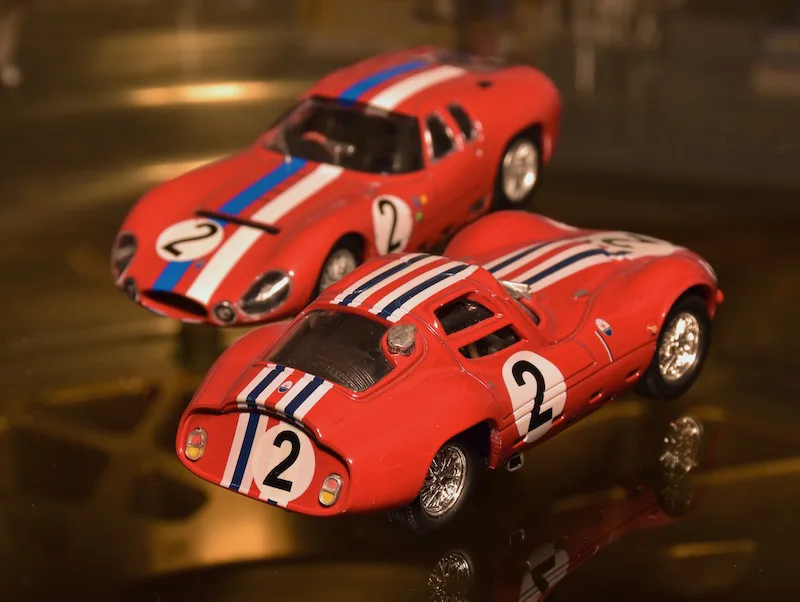
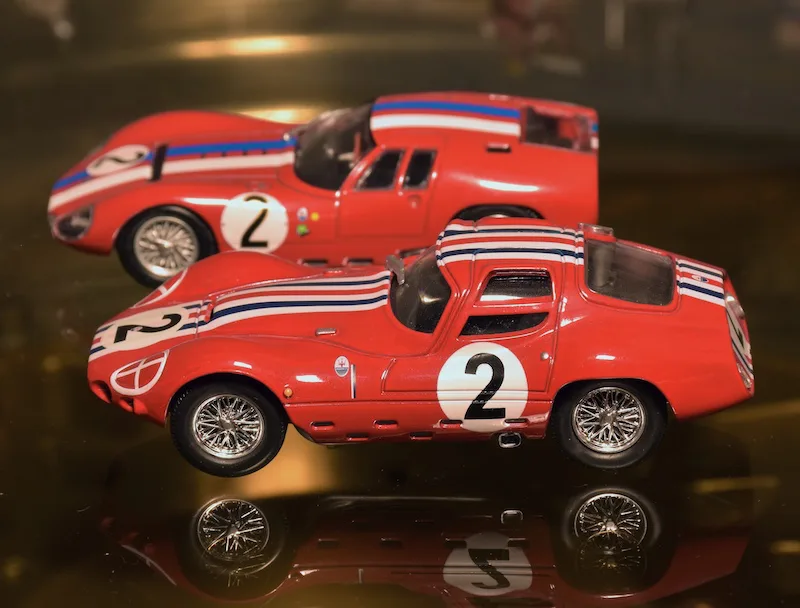
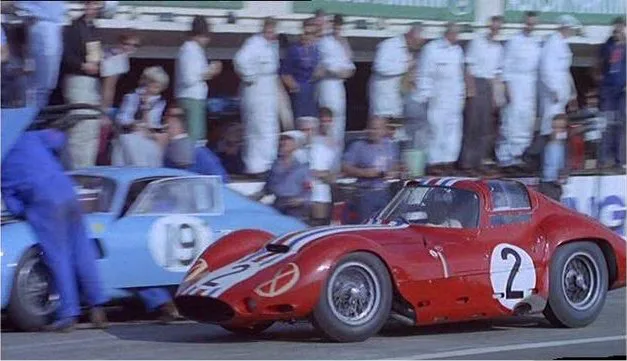
- HONGWELL #unknown (diecast)
- Overall rating: 2 STARS | Quality details: 2 STARS | Estimated value: 2 STARS
1964 Le Mans 24h, Porsche 904/4 GTS. The Porsche 904 was a small, light GT with great performance and reliability. That is, if equipped with the original flat-4 engine. Two factory 904/8 were entered with 2-liter 8 cylinder engines but both retired with clutch related problems. The 4 cylinder versions all finished in the top 12 overall and 1st to 5th in the 2-liter GT category. One of these was the bright orange Racing Team Holland car from Ben Pon.
#33 Ben Pon (NL) / Henk van Zalinge (NL) – 8th / 2nd GT < 2 liter
Racing Team Holland Porsche 904/4 Carrera GTS – 2.0 liter Porsche Type 587/3 flat-4, approx. 180 hp. Dunlop tires. Weight 650 kg. Steel ladder frame with fiberglass body, chassisnr. #055
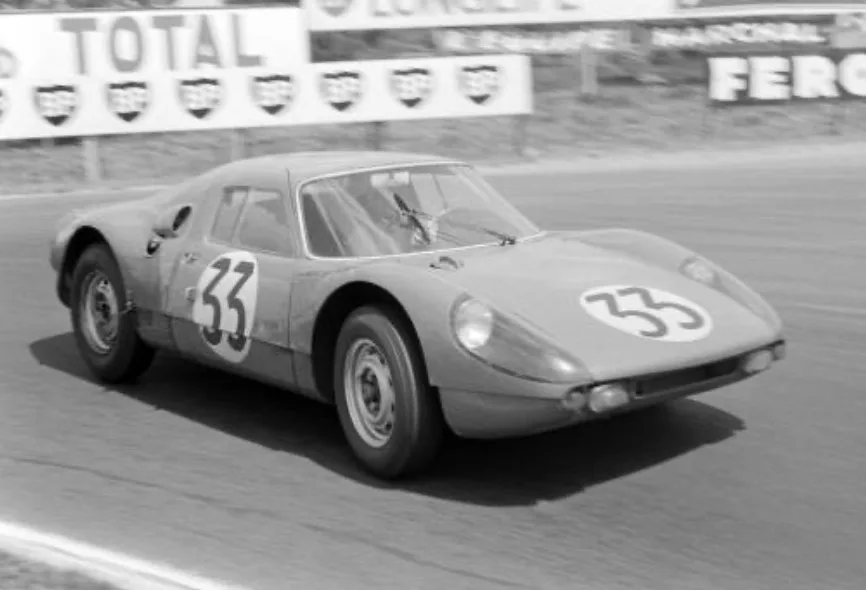
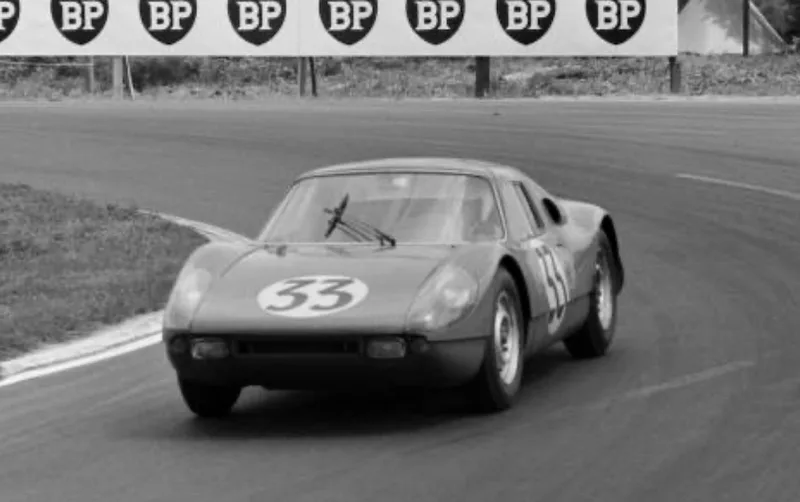
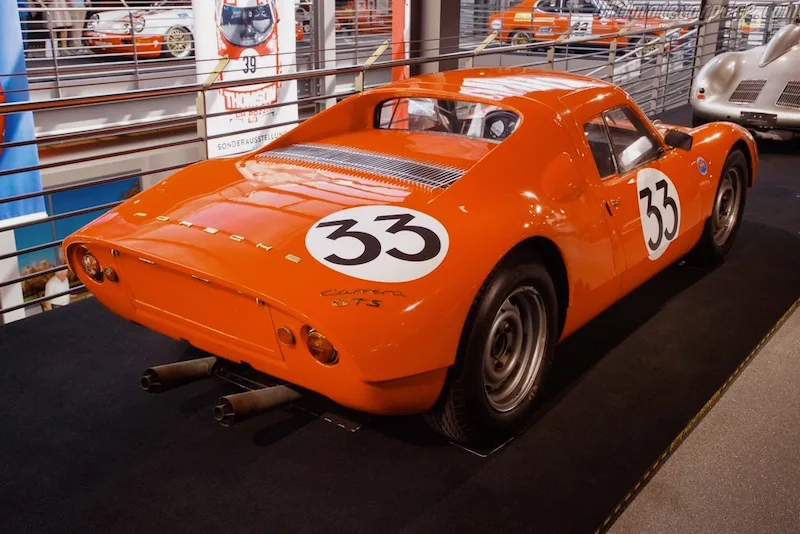
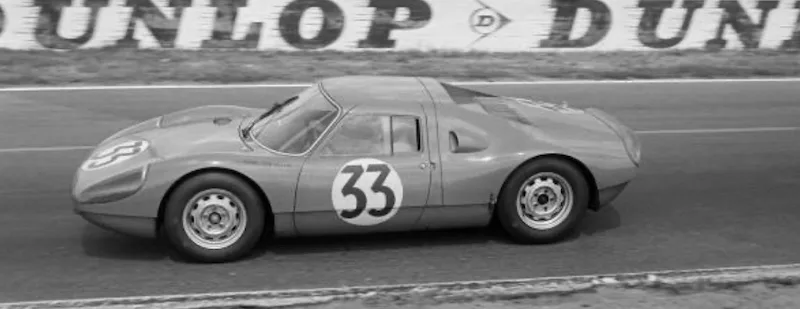
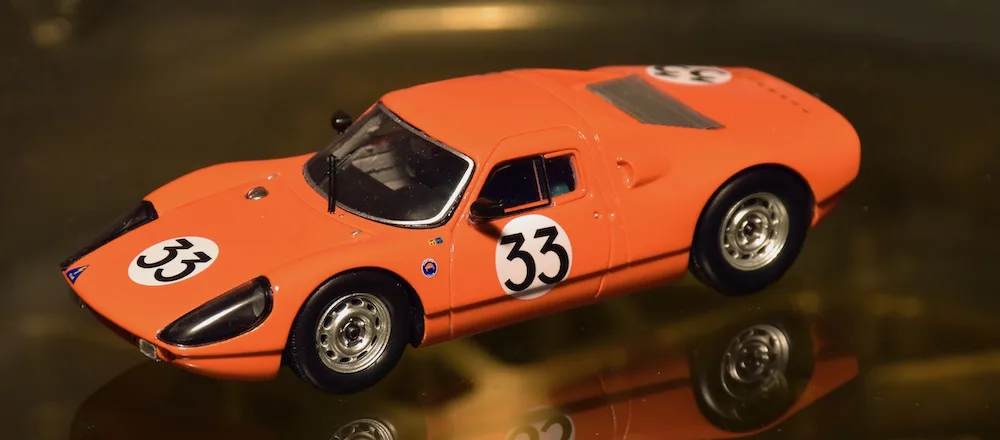
- SPARK 43NAS003 #190 / 200 (resin)
- Overall rating: 5 STARS | Quality details: 4 STARS | Estimated value: 4 STARS
1964 Le Mans 24h, Maserati Tipo 151/3. In 1962 Maserati built the Tipo 151 for the prototype class at Le Mans. Two years later the Italians used this 151/3 with the high tail end that was caracteristic for the work of Pierre Drogo, the man who also designed the famous Ferrati 250 GTO ‘breadvan’. The car was fast, but had to start from the pit lane because of a broken accelerator cable and retired with electrical problems.
#2 André Simon (F) / Maurice Trintignant (F) – DNF
Maserati France Maserati Tipo 151/13- 4.9 liter Maserati V8, approx. 430 hp. Weight 870 kg. Steel space frame with aluminium body, chassisnr. #002.
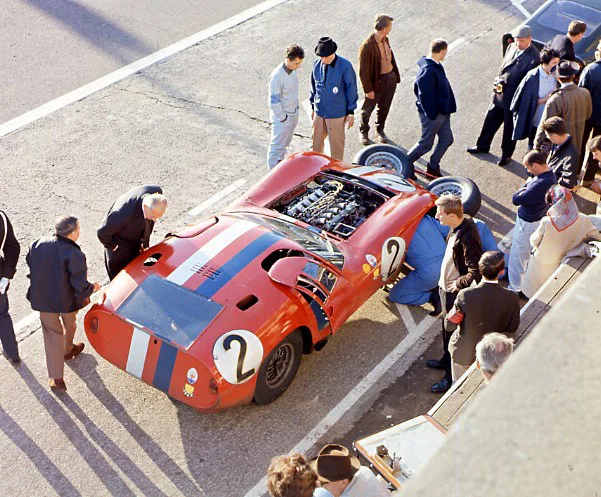
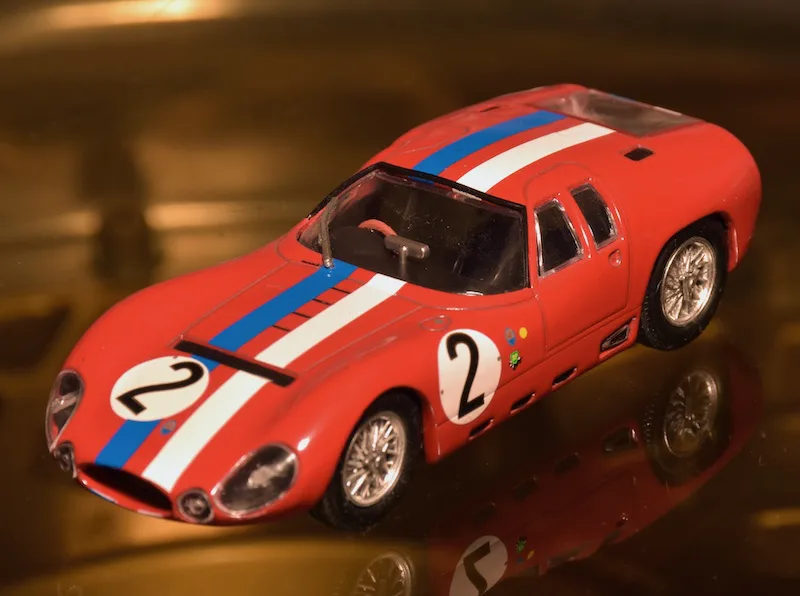
- LEO MODELS #unknown (diecast)
- Overall rating: 2 STARS | Quality details: 2 STARS | Estimated value: 2 STARS
1964 Tour de France, Ferrari 250 GTO. Everybody knows the Tour de France as a cycling event, but in the previous century it was also a famous and grueling road race for GT’s. The teams crossed France in a few days time and had to compete in rally stages and races on famous tracks such as Rouen, Pau, Reims, Clermont-Ferrand and Le Mans. The event can be compared to the Giro d’Italia (also the name of a cycling event). The Ferrari of the Belgian distributor Jaques Swaters won the event with Lucien Bianchi (great-uncle of the late Jules Bianchi) and Georges Berger.
#172 Lucien Bianchi (B) / Georges Berger (B) – 1st
Ecurie Francorchamps Ferrari 250 GTO – 3.0 liter Ferrari Tipo 168 Comp/62 – V12 60º, approx. 305 hp. Firestone tires. Weight 1050 kg. Aluminium space frame, chassisnr. #4153 (registration MO-84265).
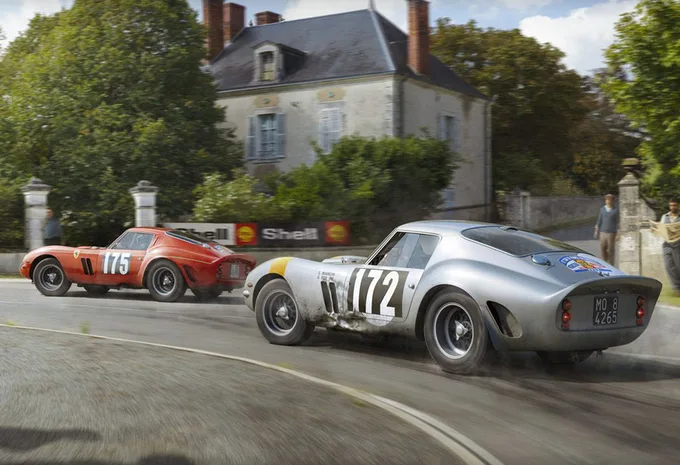
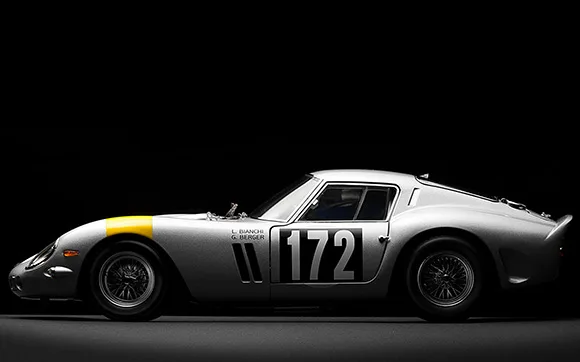

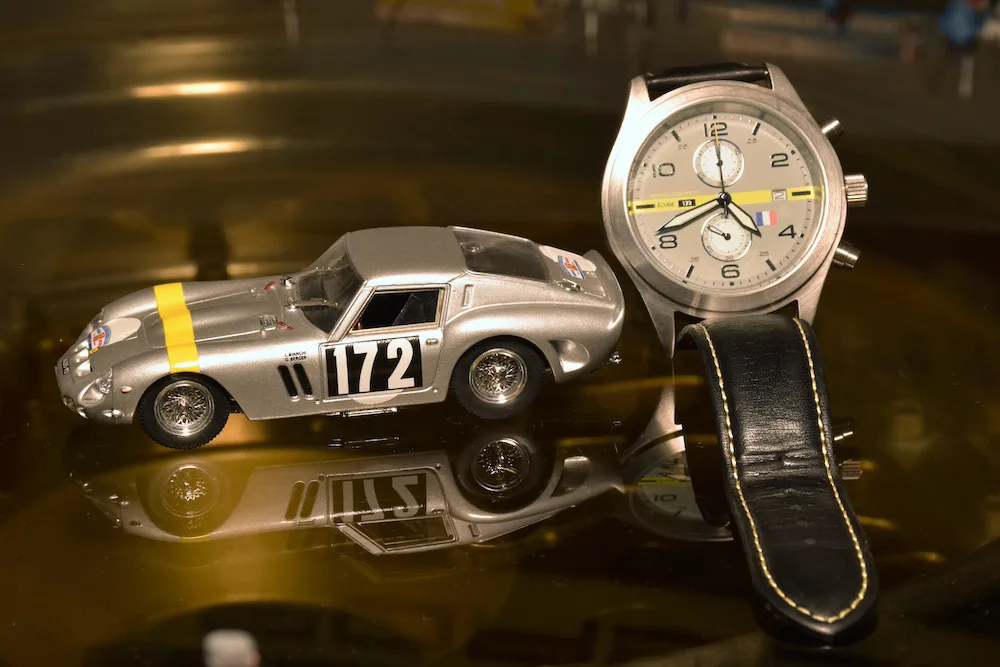
- BRUMM EF07/15, limited #353/500, produced by BANG (diecast)
- Overall rating: 3 STARS | Quality details: 3 STARS | Estimated value: 3 STARS
1964 Sebring 12h, Corvette C2 Grand Sport. The Corvette Stingray and AC Cobra were both introduced in 1962. The Corvette had more power but was much heavier, therefor the Cobra won more races. Designer Duntov decided to build a homologation special, the Grand Sport that was hundreds of pounds lighter. Only 5 cars were built, so it had to start in the prototype category in the 12 hours of Sebring. Roger Penske and Jim Hall finished 18th.
#4 Roger Penske (USA) / Jim Hall (USA)
McKean Corvette C2 Grand Sport – 5.3 liter Chevrolet V8, approximately. 400 hp. Goodyear tires. Steel monocoque with fiberglass body, chassisnr. #005
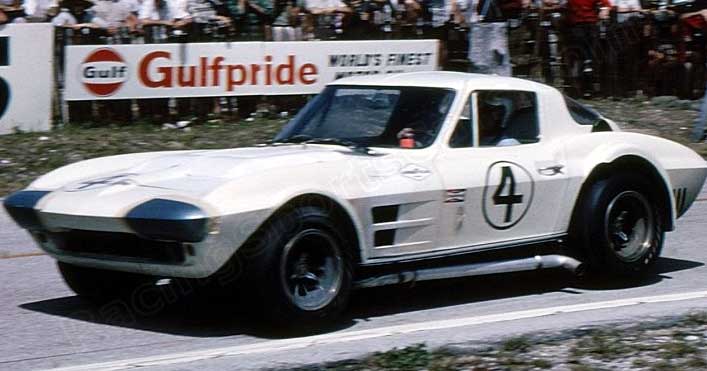
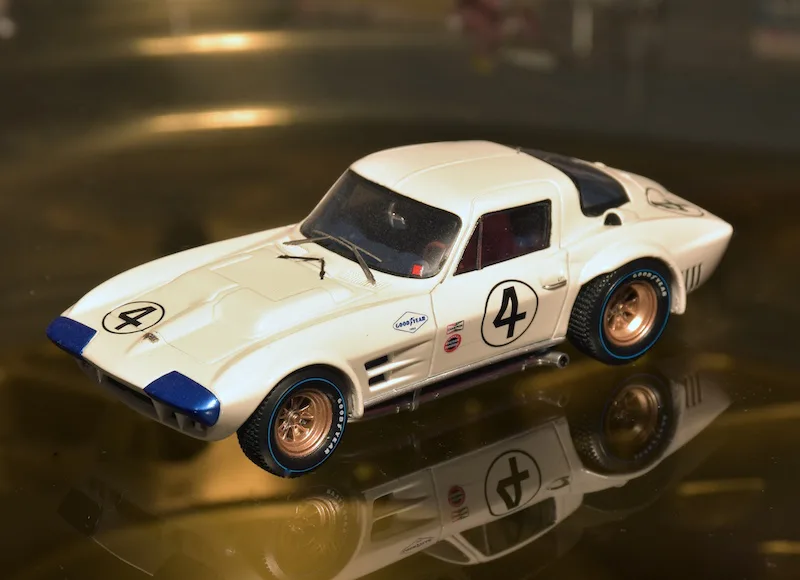
- TRUE SCALE MINIATURES TSM 124321 (resin)
- Overall rating: 5 STARS | Quality details: 5 STARS | Estimated value: 5 STARS
1964 Sebring 12h, Iso Grifo A3/C. Former Ferrari and Lamborghini designer Giotto Bizzarini started his own project. One of the first cars he developed was this Iso Grifo A3/C that had a Chevrolet V8 engine. A beautiful car that wasn’t as succesful in racing as Bizzarini had hoped. This car – that looked like a Dutch police car – started in the middle of the grid in Sebring but finished last but one.
#5 Enus Wilson (USA) / William McLaughlin (USA) / Ed Hugus (USA) – 39th
McLaughlin Iso Grifo A3/C – 5.3 liter Chrysler V8, approx. 400 hp. Goodyear tires. 950 kg. Steel monocoque with aluminium body, chassisnr. BO202 (Bizzarrini)
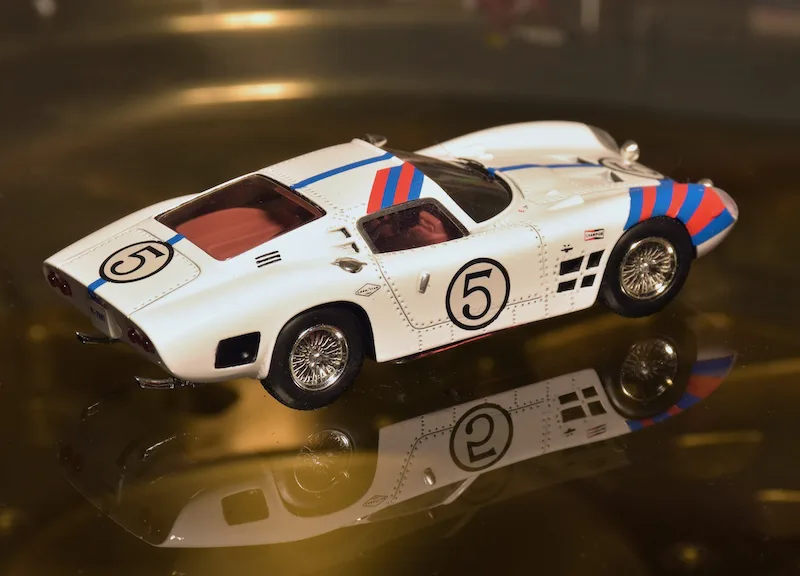
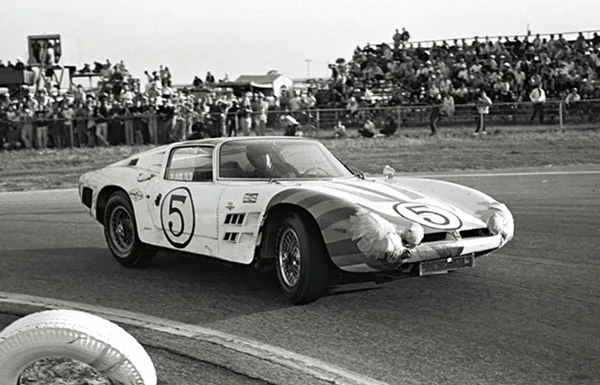
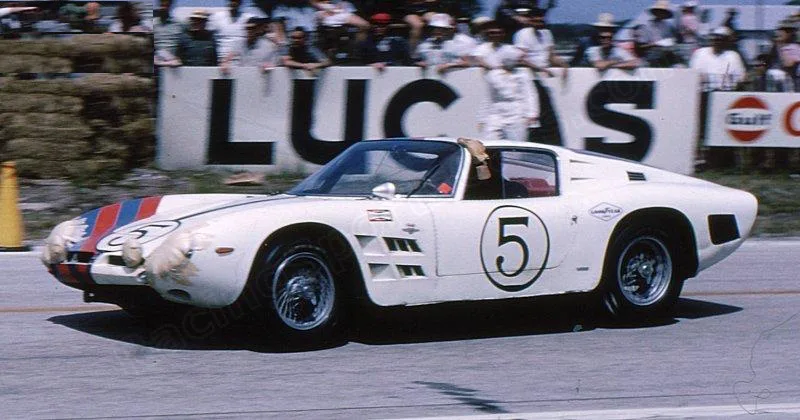
- SPARK S0387 (resin)
- Overall rating: 5 STARS | Quality details: 5 STARS | Estimated value: 4 STARS
1964 Le Mans 24, Shelby Cobra Daytona Coupe. The concept of the Cobra was the same as form the Ford GT 40; a British chassis of which the original engine was replaced by a powerful Ford V8. Carol Shelby created a version with a much higher top speed by developing this aerodynamic Coupe version for Daytona and Le Mans 1964. Gurney and Bondurant won the GT category and finished 4th overall.
#5 Dan Gurney (USA) / Bob Bondurant (USA) – 4th / 1st GT
Shelby Cobra Daytona Coupe – 4.7 liter Ford V8, approx. 390 hp. Goodyear tires. Weight 1.045 kg. steel space frame with aluminium body, chassisnr. CSX2299 (Shelby)
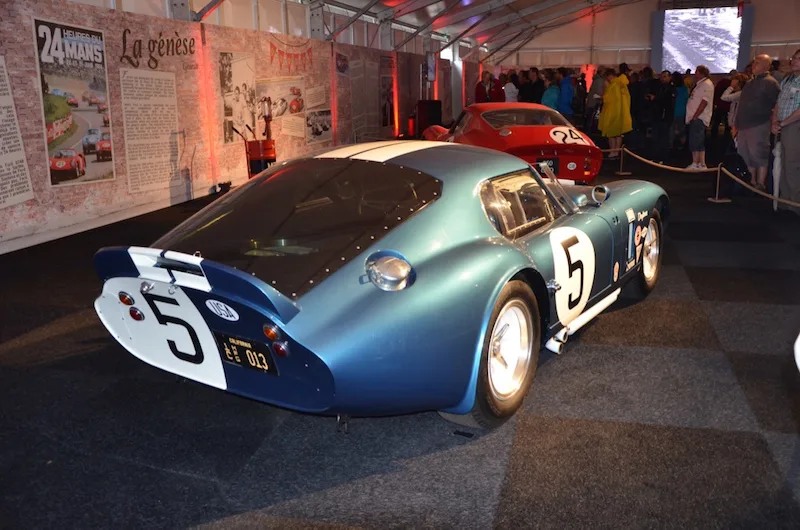
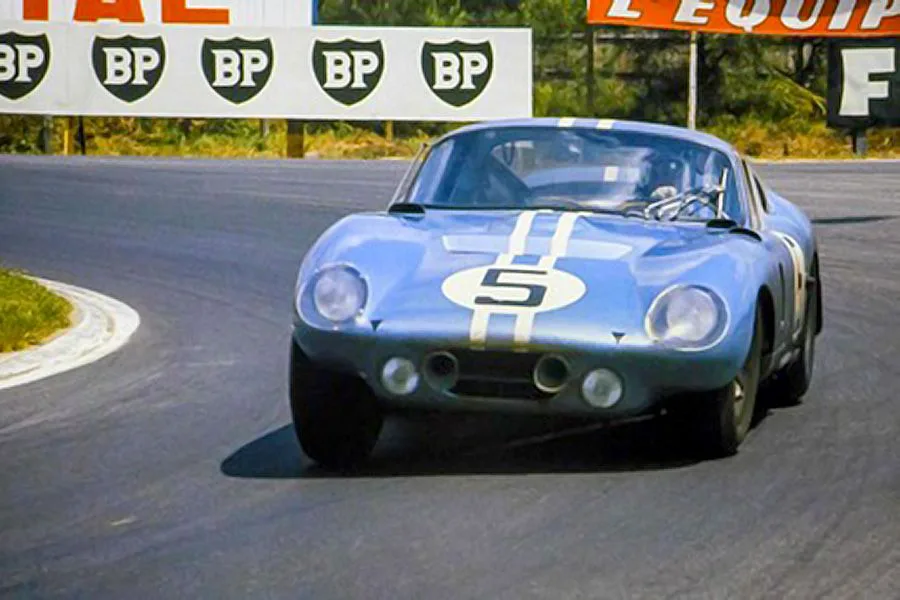
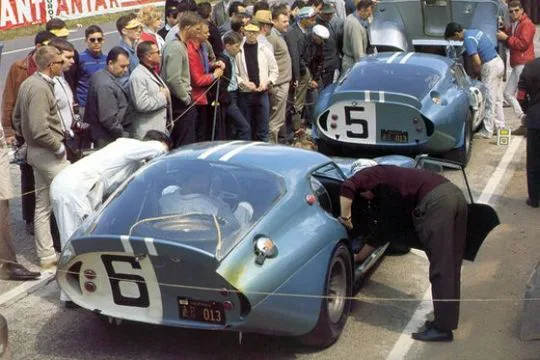
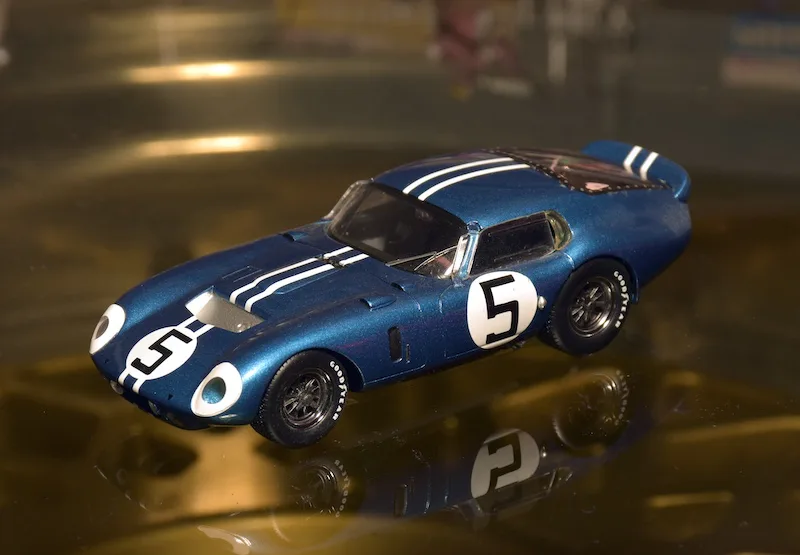
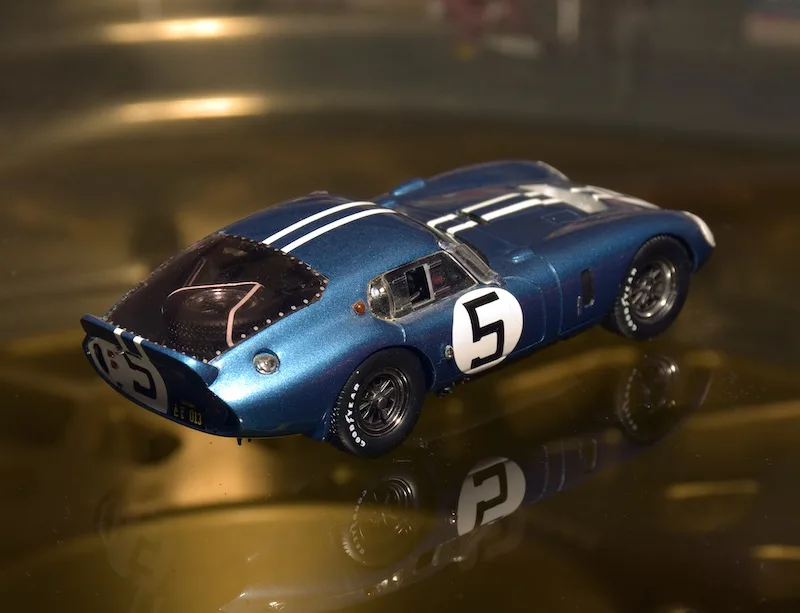
- TRUE SCALE MINIATURES TSM 134317 (resin)
- Overall rating: 5 STARS | Quality details: 5 STARS | Estimated value: 5 STARS
1964 Le Mans 24, Ferrari 250 GTO 64. The Ferrari 250 GTO is one of the most famous GT’s in history, only 36 have been built. In 1964 Ferrari has built a second series using the same chassis and engine, the bodywork was changed to be more in line with the 250 LM prototype. Only three have been built and four cars from the first series have been adapted. This car from Equipe Nationale Belge won the 3-liter category and finished 5th overall.
#24 Lucien Bianchi (B) / “Beurlys” (B) – 5th / 1st GT 3 liter
Equipe Nationale Belge Ferrari 250 GTO 64 – 3.0 liter Ferrari Tipo 168 Comp/62 – V12 60º, approx. 305 hp. Firestone tires. Weight 1050 kg. Aluminium space frame, chassisnr. #5575
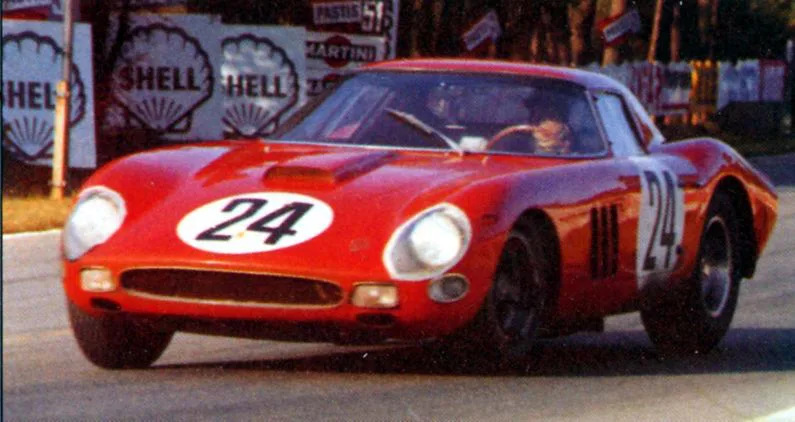
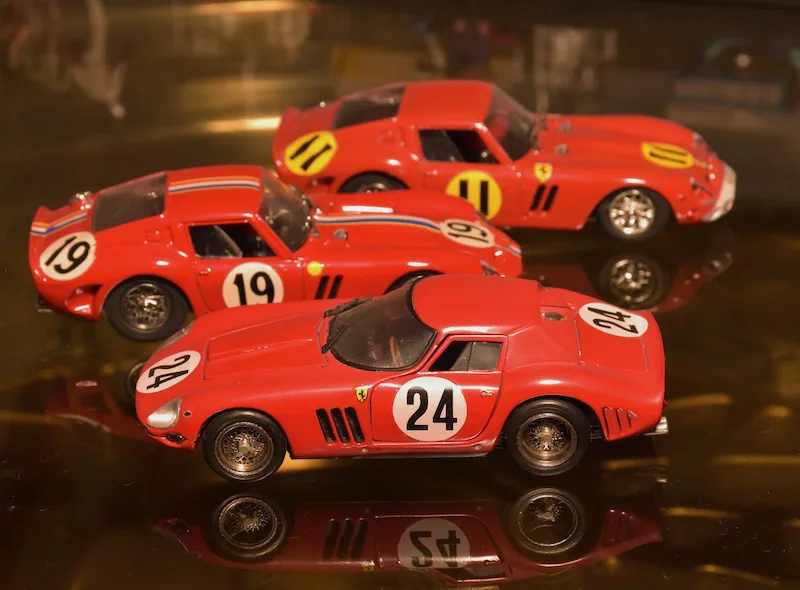
- JOUEF EVOLUTION 3004 (resin)
- Overall rating: 2 STARS | Quality details: 2 STARS | Estimated value: 2 STARS
1964 Targa Florio, Ferrari 250 GTO. Ulf Norinder had his Ferrari 250 GTO painted in blue and yellow, the national colors of his homecountry Sweden. He participated in a number of races in 1964, amongst which also the Targa Florio. Het finished 9th. The model shown however is not from that race, this is a model of the car that participated in a historic event Tour de France in 1997.
#112 Ulf Norinder (S) / “Picko” Troberg (S) – 9th
Norinder Ferrari 250 GTO – 3.0 liter Ferrari Tipo 168 Comp/62 – V12 60º, approx. 305 hp. Firestone tires. Weight 1100 kg. Aluminium space frame, chassisnr. #3445
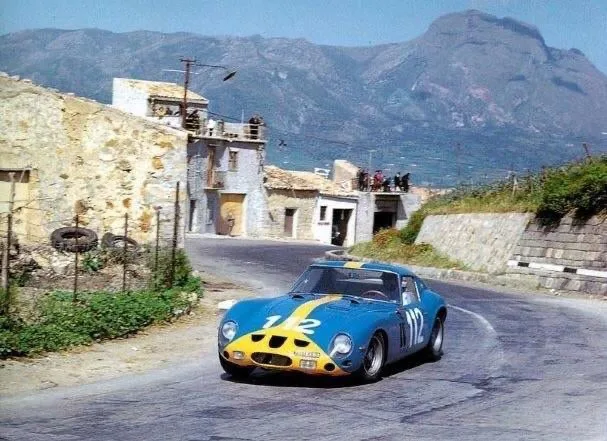
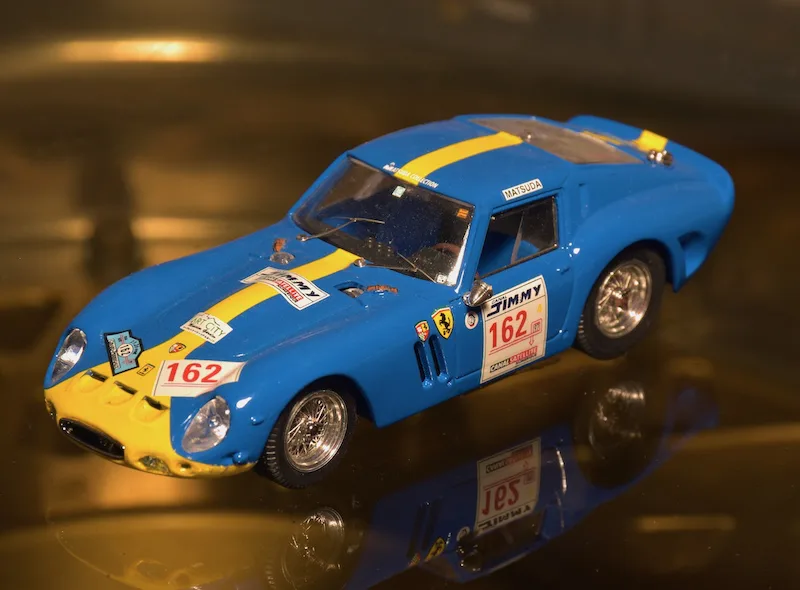
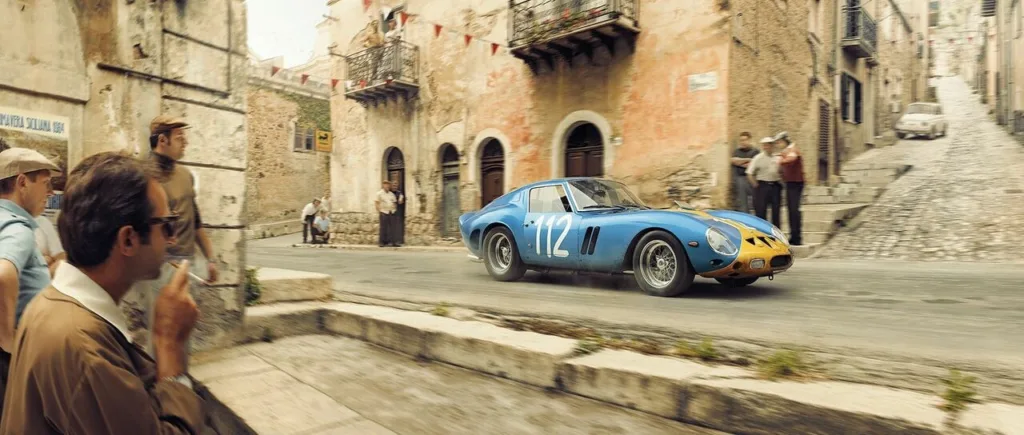
- BANG 1025 (diecast)
- Overall rating: 3 STARS | Quality details: 3 STARS | Estimated value: 3 STARS
1965 Le Mans 24h, Ferrari 275 GTB Competizione. All attention went to the battle between the Ferrari 250 LM’s and the Ford GT 40’s. Behind that, this Ecurie Francorchamps Ferrari 275 GTB/C finished 3rd overall and won the GT class!
#24 Willy Mairesse (B) / “Beurlys” (
B) – 3rd overall / 1st GT
Ferrari 275 GTB Competizione – 3.3 liter Ferrari Tipo 213 Comp – V12 60º, approx. 300 hp. Firestone tires. Weight 1115 kg. Aluminium space frame, chassisnr. #6885
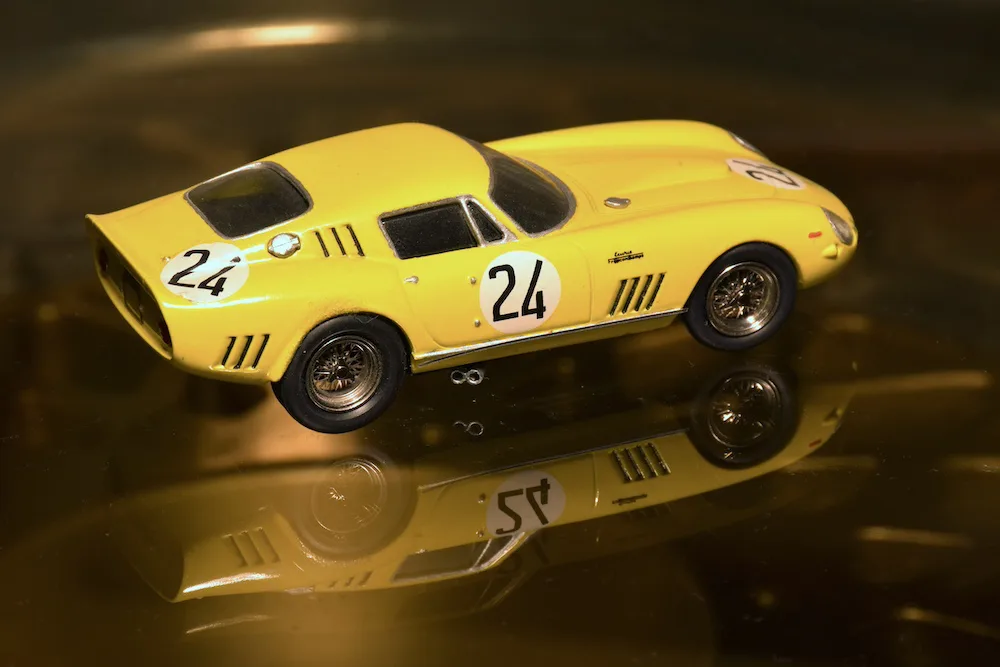

- VROOM handmade model (resin)
- Overall rating: 5 STARS | Quality details: 5 STARS | Estimated value: 5 STARS
1965 Le Mans 24h, Alfa Romeo TZ2. Nowadays we have escape roads and when a car comes to a halt, it’s being salvaged by the track marshals during a (virtual) safety car. In 1965 things were different: At the outside of Mulsanne corner was a large sand trap and when a car got caught, you had to dig it out your self while the race just went on. This happened to Teo Zeccoli in the first lap. It was so warm, he even took off his racing suit when trying to get the car free from the sand.
#43 Teo Zeccoli (I) / José Rosinski (F) – DNF
Alfa Romeo Guilia TZ2 – 1.6 liter Alfa Romeo straight-4, approximately. 170 hp. Unknown tires. Weight 620 kg. steel monocoque + fiberglass body, chassisnr. #7750112
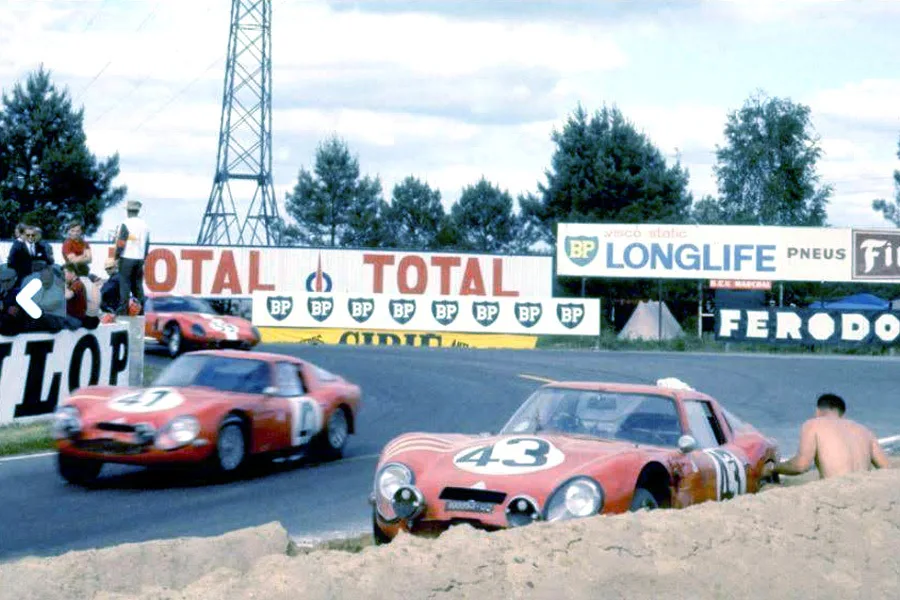
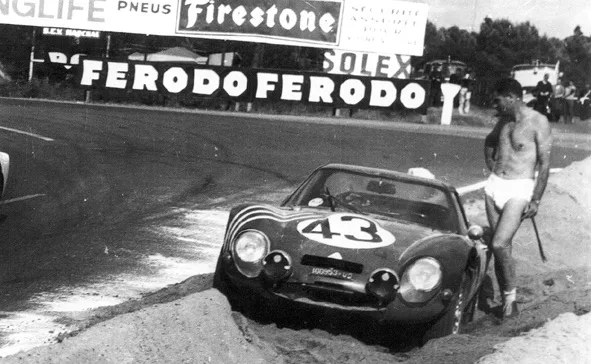
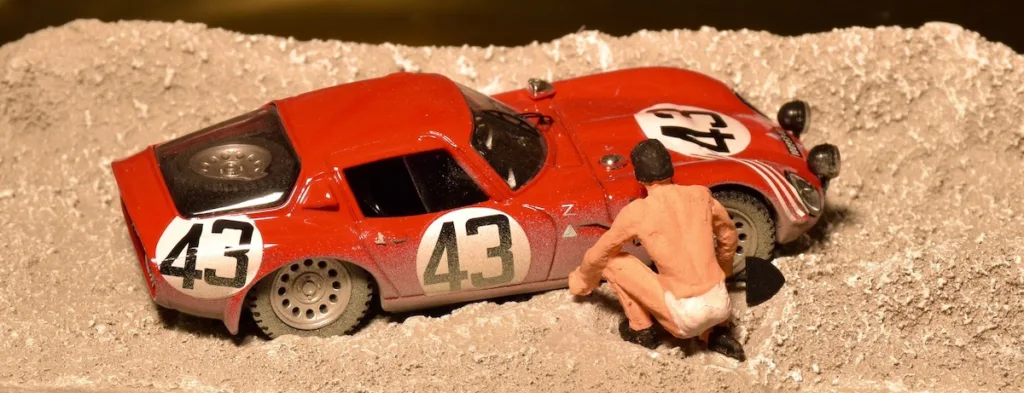
- BEST 9605 diorama #587 / 2000 (diecast)
- Overall rating: 4 STARS | Quality details: 4 STARS | Estimated value: 3 STARS
1967 Le Mans 24h, Ferrari 275 GTB/C. When Ferrari launched a replacement for the 250 GT, the 275 GTB, it was only logical that the new GT racer would be derived from this model. However GT racing’s popularity was fading when the world’s focus turned to the prototype class, so the 275 GTB racer was not a priority. One of the Swiss drivers, Rico Steinemann would become teammanager for Porsche.
#28 Rico Steinemann (CH) / Dieter Spoerry (CH) – 11th / 1st GT <5 liter
Scuderia Filipinetti Ferrari 275 GTB/C – 3.3 liter Ferrari Tipo 213 Comp – V12 60º, approx. 300 hp. Firestone tires. Weight 1115 kg. Aluminium space frame, chassisnr. #9079
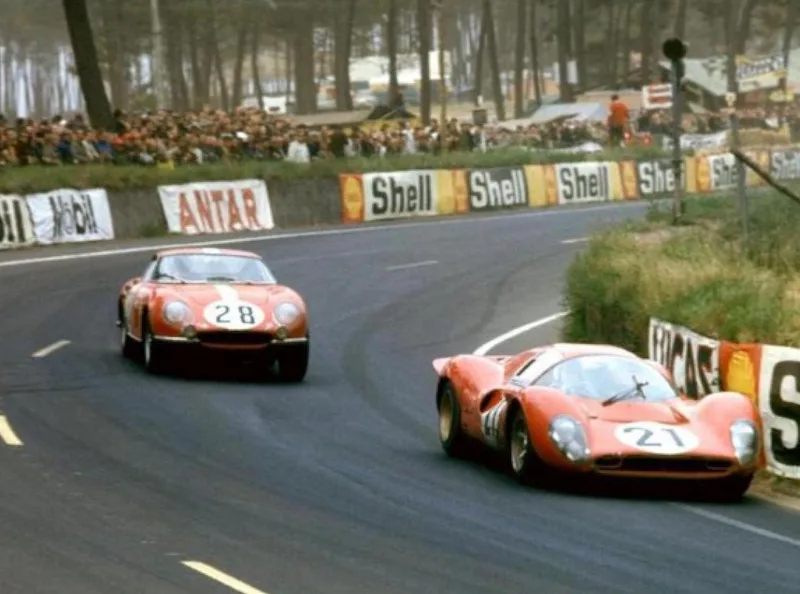
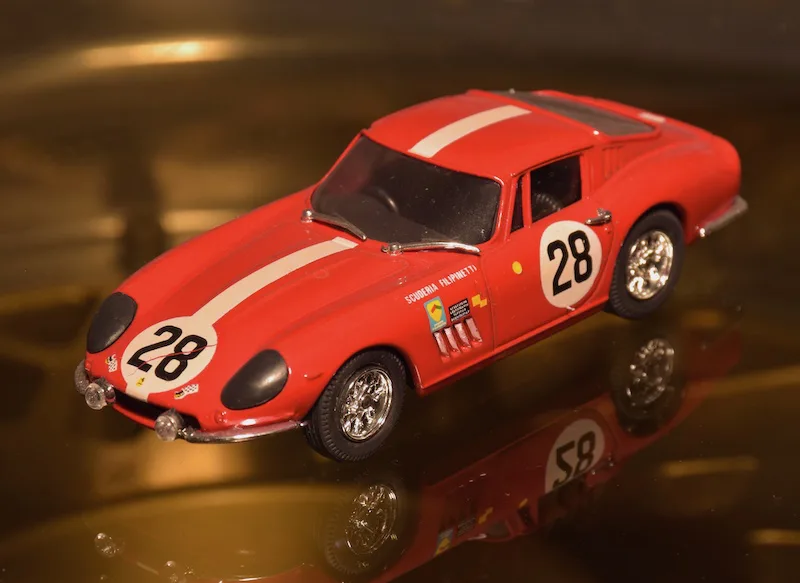
- MODEL BOX 8452 (resin)
- Overall rating: 3 STARS | Quality details: 3 STARS | Estimated value: 3 STARS
1968 Spa-Francorchamps 24h, Porsche 911 L. 1968 was only the 5th running of the 24-hour race at Spa-Francorchamps. It already was very popular with teams and spectators. The battle went on between the fast Alfa Romeo 1600 GTA’s and Porsche 911’s that had a small 2-liter engine in those years. The Porsche 911L prepared by Kremer took victory in a time that Erwin Kremer himself drove as well.
#32 Erwin Kremer (D) / Helmut Kelleners (D) / Willi Kauhsen (D) – 1st
Kremer Porsche 911 L – 2.0 liter Porsche flat-6, approx.170 hp. Dunlop tires. Weight 850 kg. Steel monocoque, chassisnr. unknown.
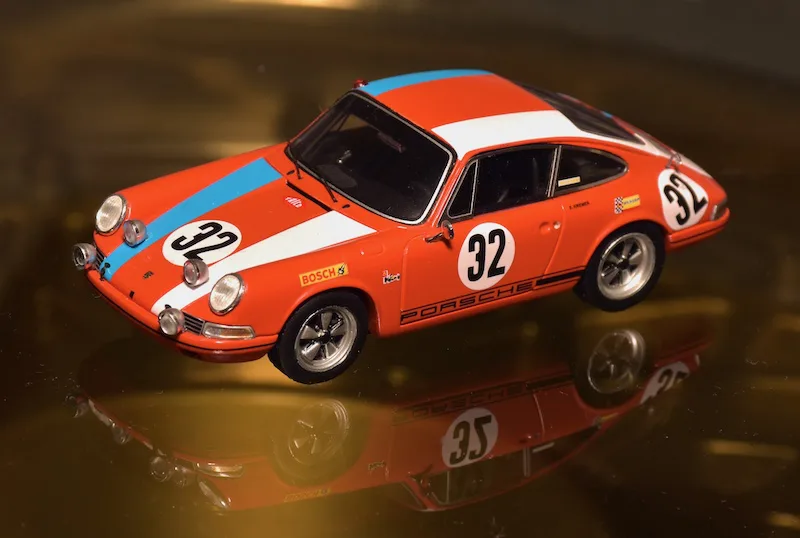
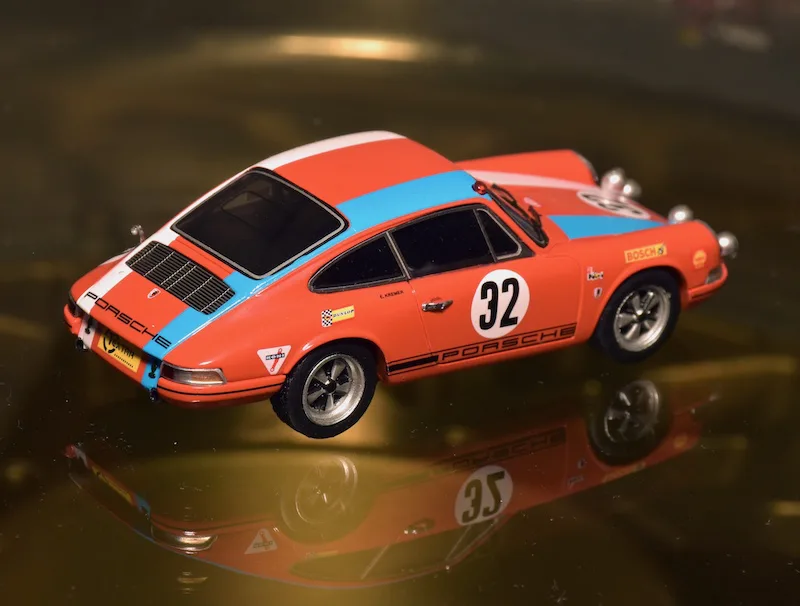
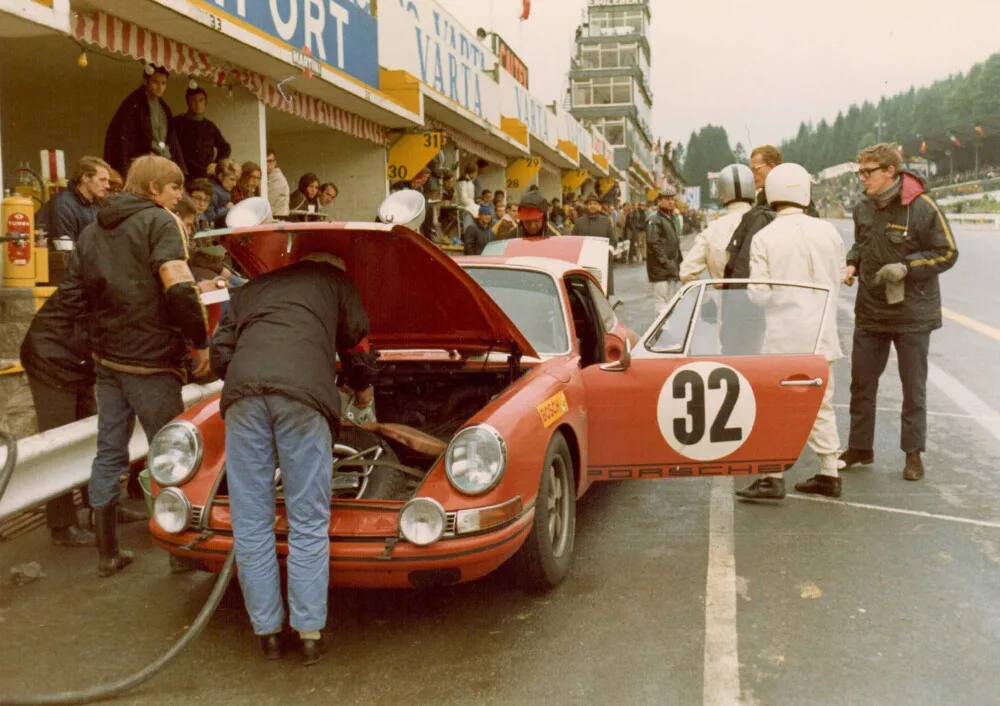
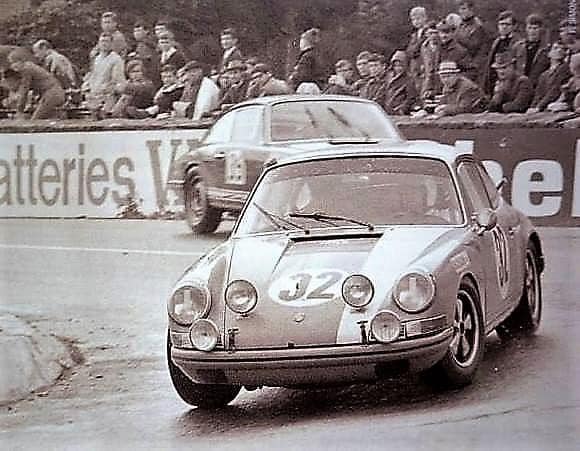
- SPARK Kremer Racing 50 years MAB009 #209 / 300 pcs (resin)
- Overall rating: 4 STARS | Quality details: 4 STARS | Estimated value: 4 STARS
1968 Le Mans 24h, Chevrolet Corvette C3. The third generation Corvette became a popular racing car in short time. Henri Greder raced them at le Mans for many years. This one was entered by Swiss Scuderia Filipinetti but had to retire with a blown head gasket.
#3 Henri Greder (F) / Umberto Maglioli (I) – DNF / engine
Scuderia Filipinetti Corvette C3 – 7.0 liter Chevrolet L88, approx. 475 hp. Goodyear tires. Weight 1300 kg. Steel Monocoque, chassisnr. 410300
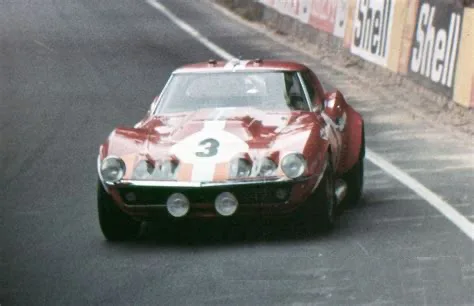
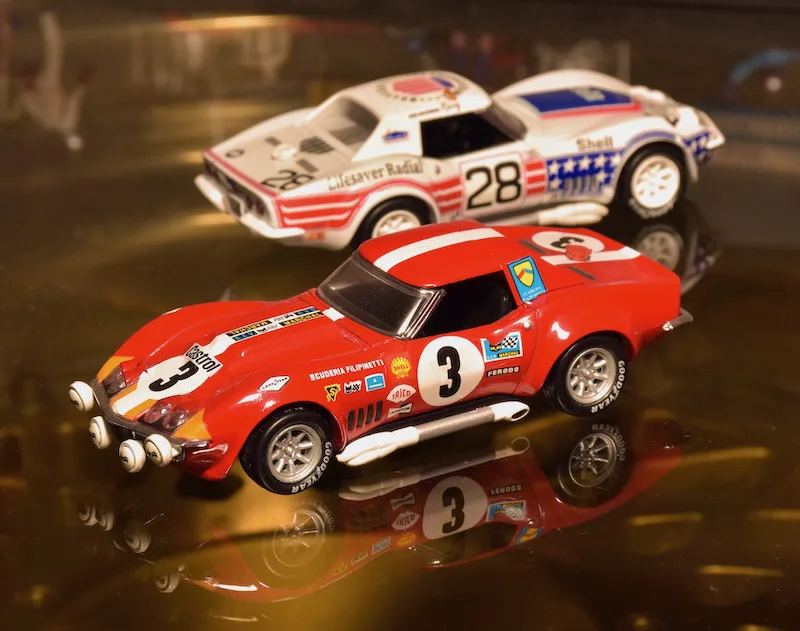
- VITESSE 044A (diecast)
- Overall rating: 3 STARS | Quality details: 3 STARS | Estimated value: 3 STARS
1968 SSCA, Toyota 2000 GT. In 1967, Toyota built the 2000 GT, the first Japanese sports car. For PR reasons, Toyota wanted it to race in the USA in the class for production cars. The Japanese shipped three cars to Caroll Shelby who did similar projects for Ford. One car was being used for tests, the other two were entered in the 1968 SCCA championship. Dave Jordan finished 2nd with this car, the other finished third.
#23 Dave Jordan (USA) – 2nd championship
Shelby Toyota 2000 GT – 2.0 liter Toyota (Yamaha) MF10L straight-6, approx. 150 hp. Goodyear tires. Weight 1100 kg. Steel monocoque, chassisnr. 10006
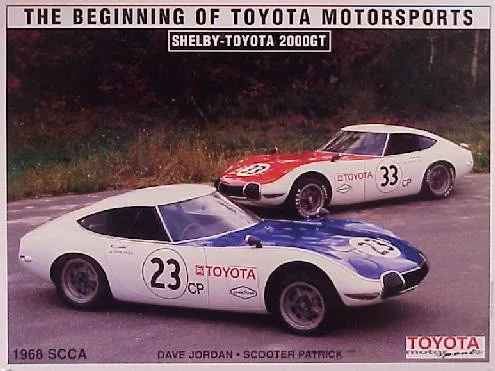
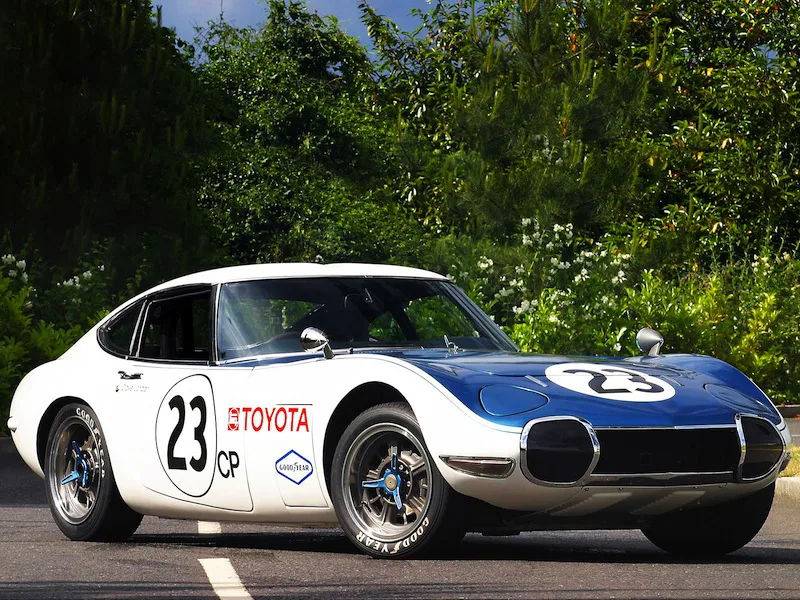
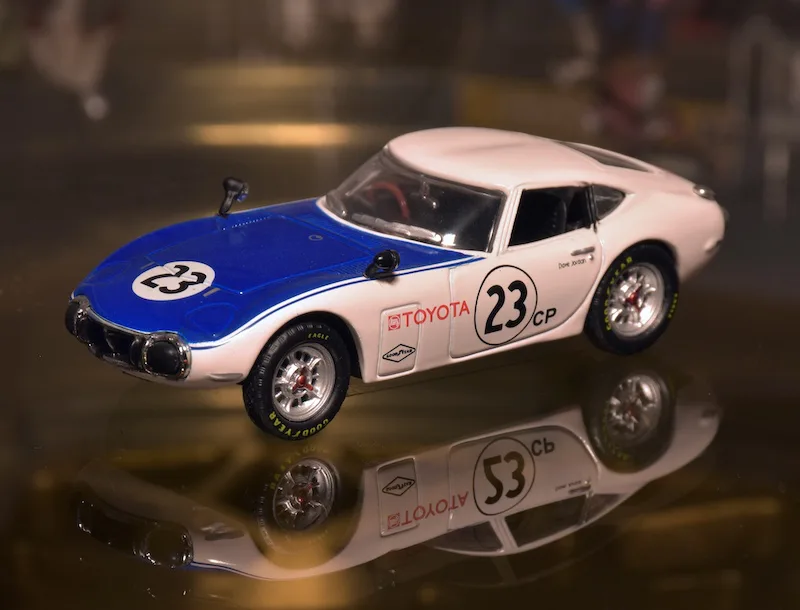
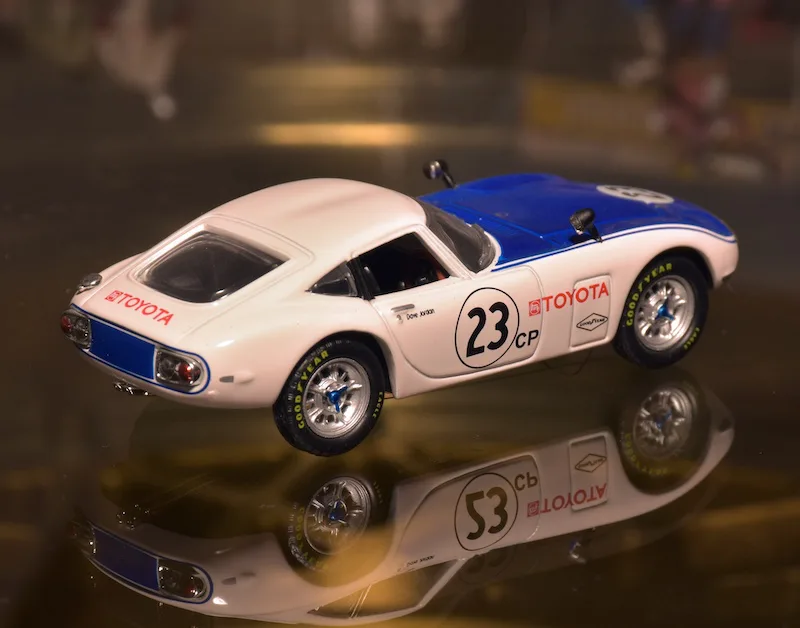
- DELPRADO #unknown (diecast)
- Overall rating: 3 STARS | Quality details: 3 STARS | Estimated value: 2 STARS
Thanks for visiting 😉
